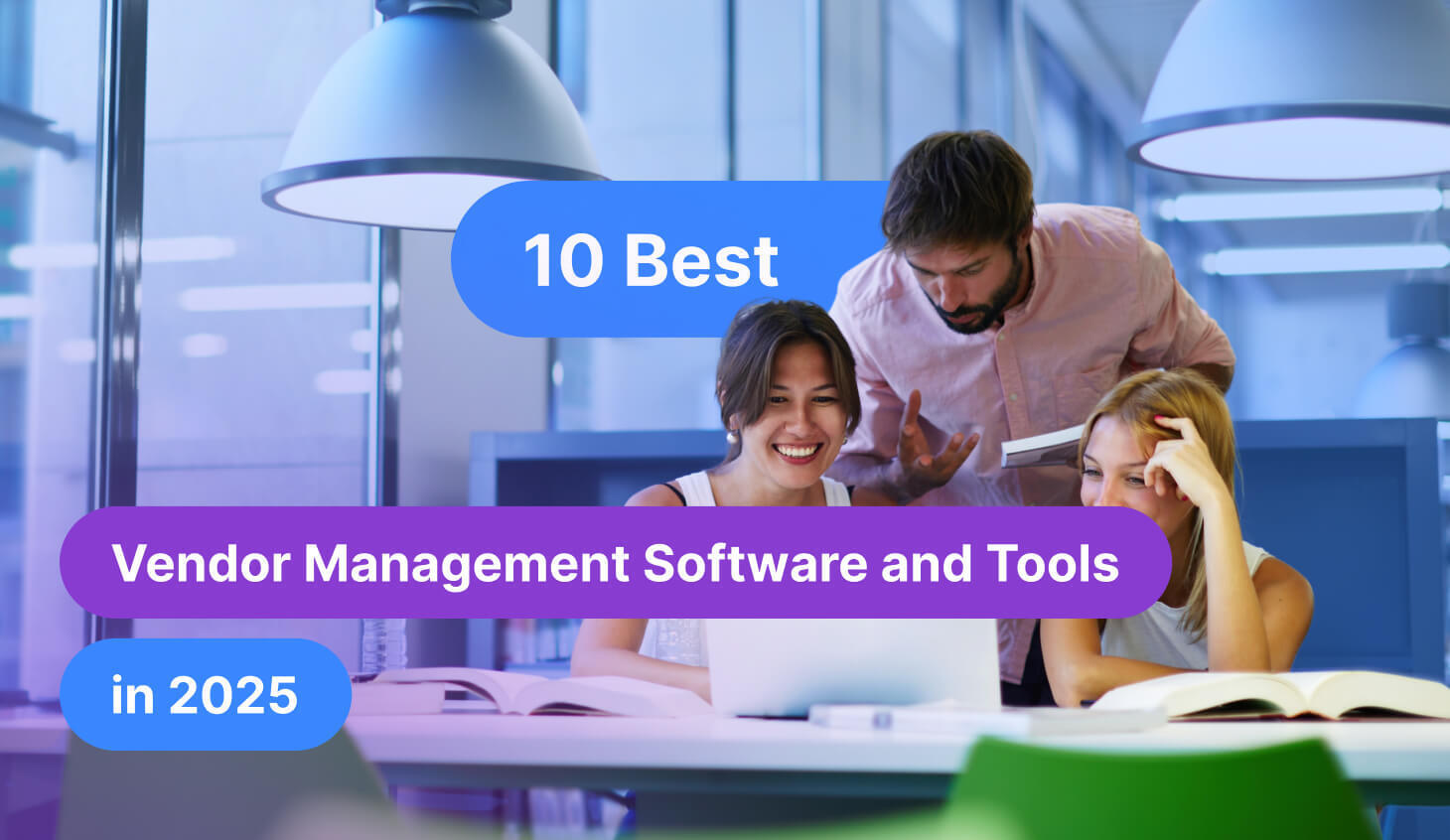Are you looking for vendor management software to streamline supplier relationships, reduce risk, and keep your organization compliant?
A good vendor management platform can help you centralize vendor data, automate onboarding, track performance, monitor risks in real-time, and simplify reporting to your leadership team.
In this guide, I’ll cover the 10 best vendor management tools that can help you gain visibility into your supply chain, cut down on manual processes, and ensure adherence to contracts, SLAs, and regulatory requirements.
TL;DR
- SmartSuite offers the best vendor management software with its centralized vendor registry, no-code automation for lifecycle workflows, and built-in risk scoring capabilities.
- Specialized tools like OneTrust and Onspring are ideal for privacy-centric programs and teams that want low-code flexibility to customize vendor workflows.
- On the other hand, platforms like ServiceNow and MetricStream can help large enterprises integrate vendor risk management with ITSM, GRC, and predictive analytics at scale.
Before we start, I wanted to go over some of the factors to consider when you’re evaluating vendor management tools:
What factors do you consider when evaluating vendor management tools?
The main factors to consider when evaluating vendor management software are its depth of vendor lifecycle coverage, automation and workflow orchestration capabilities, its compliance & third-party risk controls, and range of integrations.
Let’s go over each one of these factors in more detail: ⬇️
#1: What parts of the vendor lifecycle must the tool cover?
The first question I’d ask myself if I were looking for a vendor management tool would be which parts of the vendor lifecycle the tool must cover.
Vendor management tools vary widely in which lifecycle stages they manage, including:
- Onboarding.
- Due diligence.
- Contracting.
- Performance monitoring.
- Renewal and offboarding.
You should think about the data model you need (e.g., vendor profiles, contract terms, SLAs, contact history) and whether the product supports supplier hierarchies.
💡 Pro Tip: If you typically rely on a central contract repository for your vendors, audit trails, or supplier scorecards, confirm those features are built in.
#2: Automation and workflow orchestration capabilities
Next up, you want to decide how many manual steps you want to eliminate, such as setting up automated onboarding checklists, approval routing, renewal reminders, and remediation tasking.
Best-in-class workflow engines let you create conditional logic (e.g., route high-risk vendors to legal), escalate overdue tasks, and attach evidence to task records.
➡️ A few use cases I would look for include configurable approval flows, automated reminders, and a vendor portal for self-service submissions.
#3: Compliance and third-party risk capabilities
If your vendors touch sensitive data or regulated processes, the tool should support risk assessments, attestation collection (certs, SOC reports), and controls mapping to regulations or standards.
➡️ Good audit trails and evidence export make audits and vendor audits far less painful.
#4: Range of integrations and scalability
Lastly, you want to ensure the product can connect to your ERP, procurement, IAM, ticketing, and GRC systems via APIs or pre-built connectors so you avoid manual data entry.
If I were you, I’d evaluate whether it can scale to your vendor count and transaction volume, supports role-based permissions, and includes executive dashboards.
💡Pro Tip: Don’t forget UX: a clunky tool reduces adoption. You should test the vendor portal, admin UI, and onboarding experience before committing to a paid plan.
What are the best vendor management tools on the market in 2025?
The best vendor management tools on the market are SmartSuite with its all-in-one vendor management and no-code automation capabilities, OneTrust, and Onspring.
Here’s a breakdown of the 10 tools we shortlisted for this guide:
#1: SmartSuite: Best for teams that want an all-in-one, no-code platform to centralize vendor data, automate workflows, and streamline risk and compliance without relying on IT.
#2: OneTrust: Best for organizations that need a privacy-centric TPRM program with an extensive vendor intelligence exchange.
#3: Onspring: Best for teams that want a low-code platform to model custom vendor workflows and quickly iterate on TPRM processes.
#4: StandardFusion: Best for teams seeking a simple, cost-effective vendor management layer inside a broader GRC tool.
#5: MetricStream: Best for enterprises that need a comprehensive, highly scalable TPRM capability embedded in a full-stack GRC platform.
#6: ServiceNow: Best for organizations that want VRM tightly integrated with ITSM, CMDB, and enterprise workflows for rapid operational response.
#7: AuditBoard: Best for internal audit and compliance teams that want an audit-centric TPRM tool with strong automation and reporting capabilities.
#8: ArcherIRM: Best for enterprises needing a mature, policy-driven IRM platform to govern complex vendor portfolios and regulatory obligations.
#9: LogicGate: Best for companies that want a highly configurable TPRM platform to adapt quickly to evolving processes and signals.
#10: SAI360: Best for organizations that want vendor management combined with compliance and analytics to manage vendor risk across global supply chains.
#1: SmartSuite
SmartSuite offers the best vendor management software on the market with its combination of a centralized vendor registry, no-code automation capabilities for lifecycle workflows, a pre-built template, and risk scoring capabilities.
Our platform comes with centralized records and built-in file management that make it straightforward to consolidate vendor details, contracts, assessment results, assets, and incidents into a single profile per vendor.
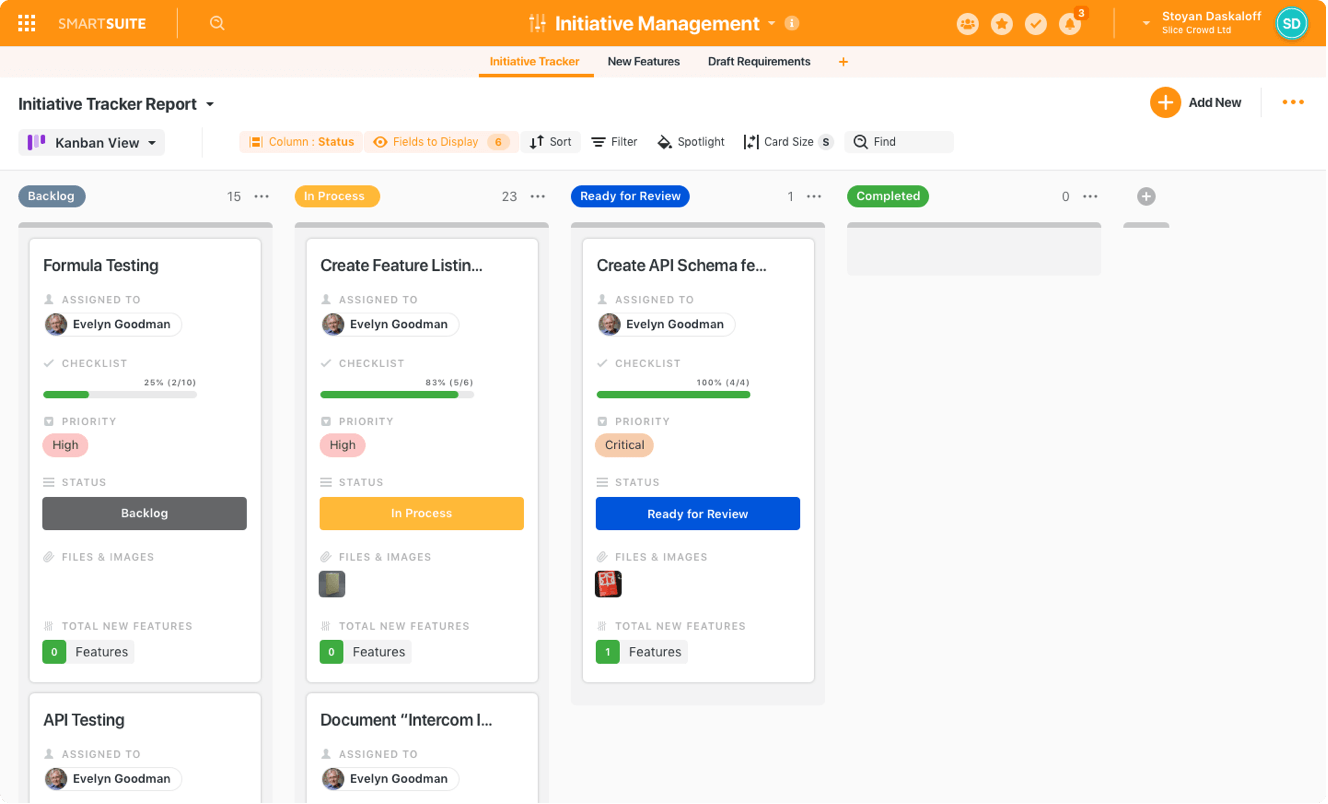
Let’s go over the functionality that makes SmartSuite the best choice for teams looking for a vendor management solution: 👇
All-In-One Vendor Management Software
SmartSuite’s no-code, easy-to-use tool empowers vendor managers and procurement teams to automate the entire vendor lifecycle.
No more data fragmentation, manual data entry, churn, and lack of visibility into vendors.
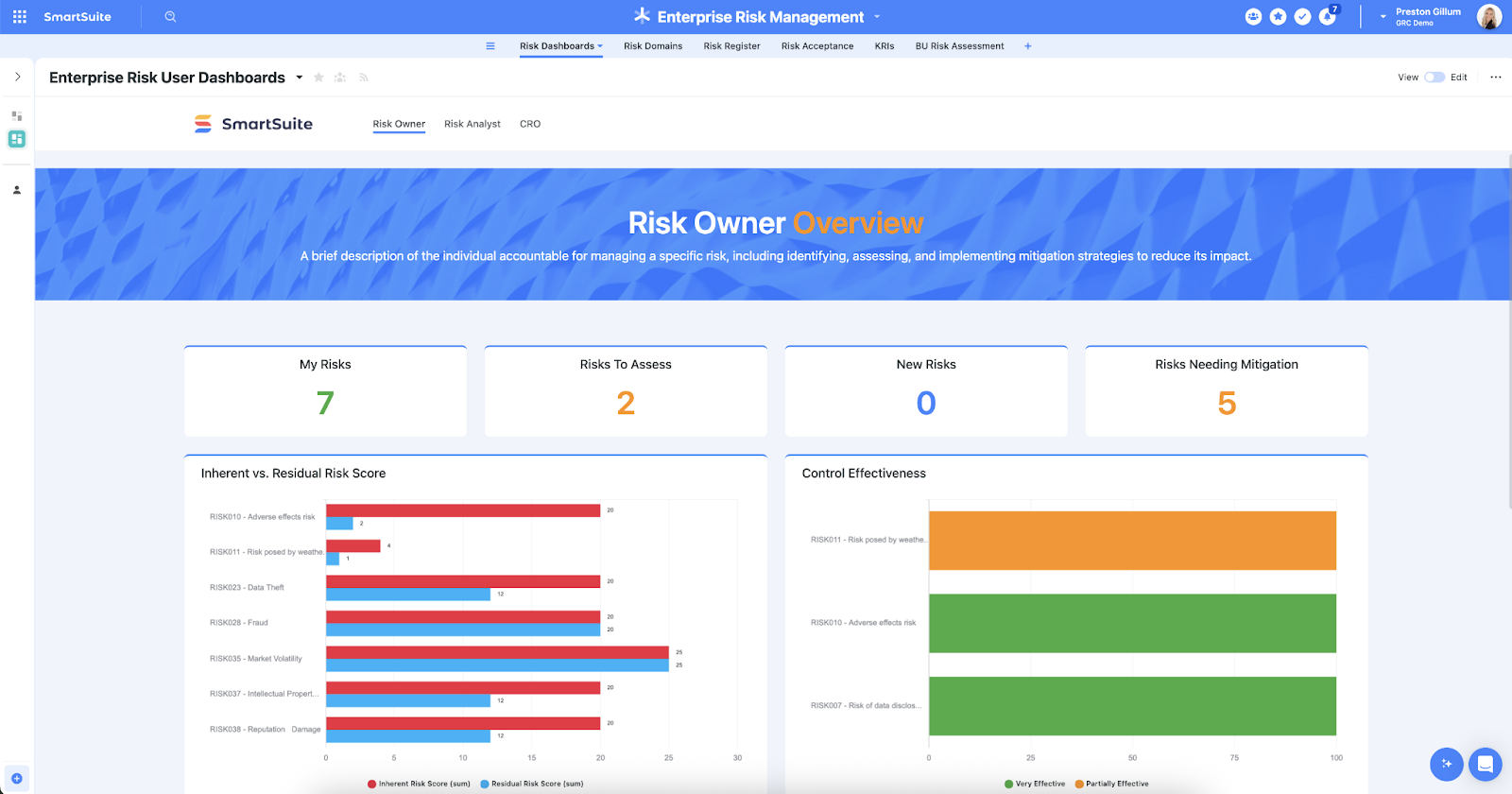
Here are the vendor management use cases you’ll get with SmartSuite:
- Create reports and dynamic dashboards: Monitor executive views into your organization’s vendor landscape and third-party risk posture with flexible charting widgets, KPI rollups, and customizable executive dashboards.
➡️ You’ll be able to track vendor concentration, top high-risk suppliers, contract expirations, remediation velocity, and SLAs at a glance.
- Centralize vendor intake and onboarding: Capture vendor metadata, contracts, contact information, certifications, and initial assessment responses in a single record.
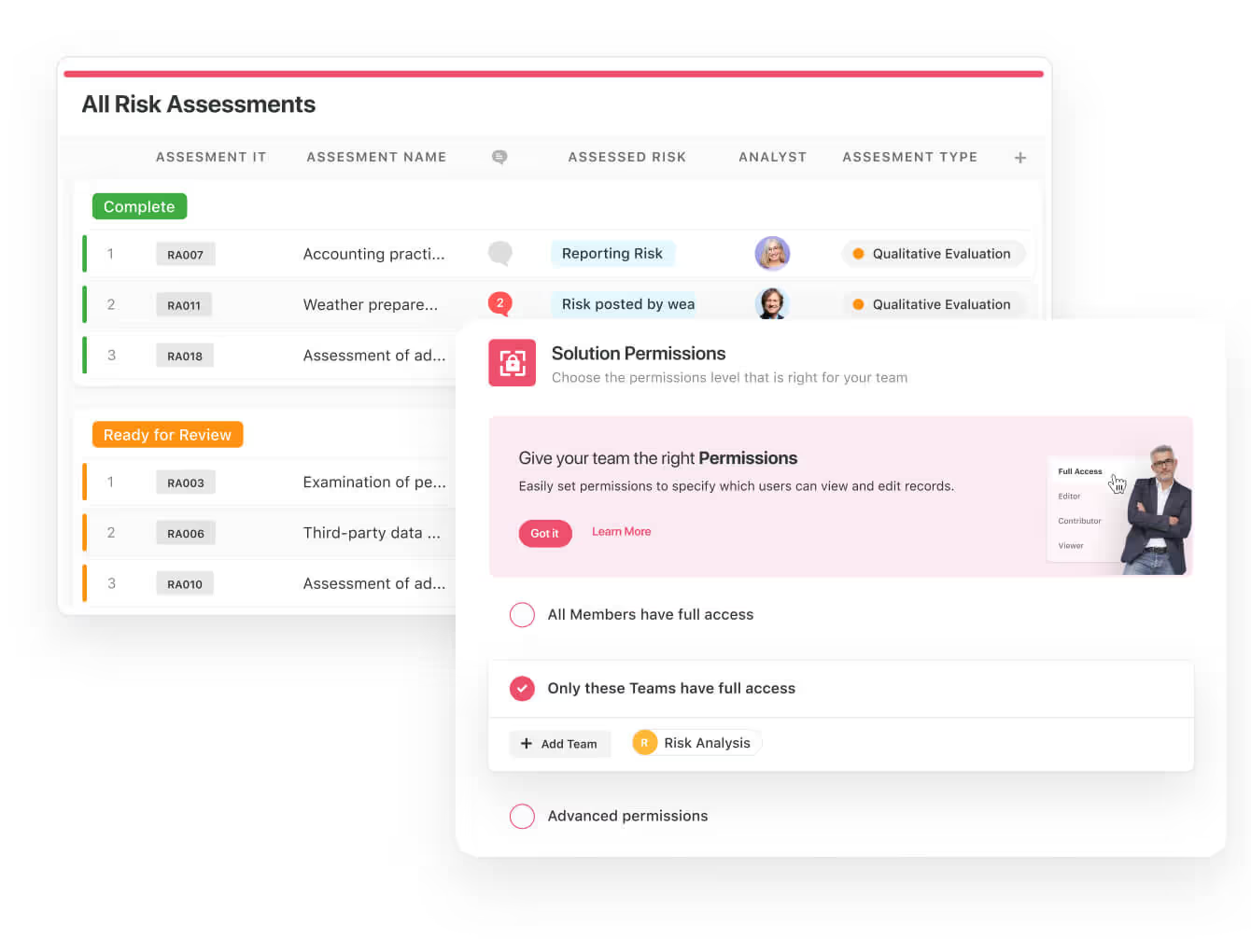
- Collaborate and respond in real-time: Assign tasks, share evidence, and receive instant notifications when critical vendor events occur (e.g., when a high-severity finding is logged or a contract clause changes).
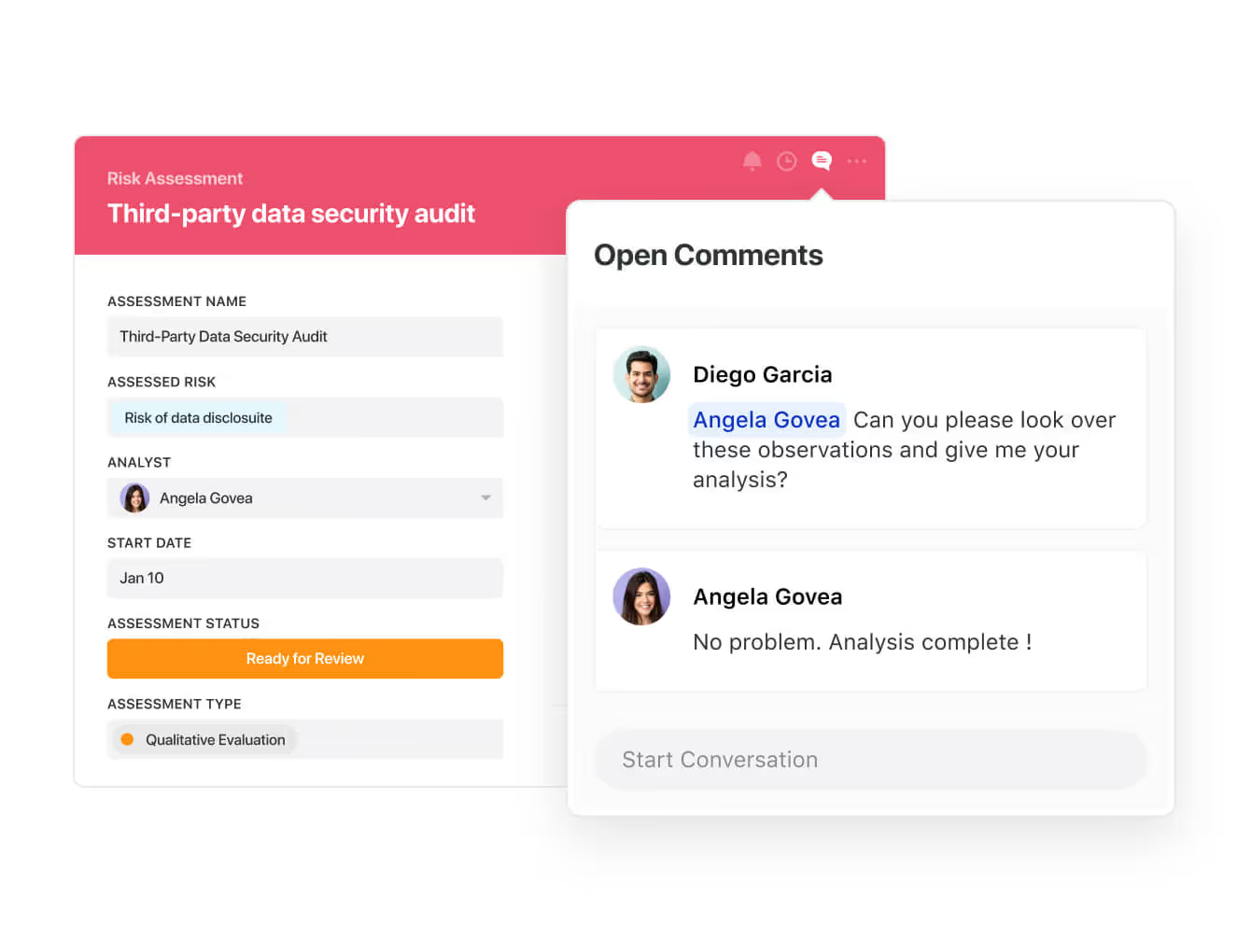
- Automate assessments, remediation, and approvals: Build assessment questionnaires, risk grading rules, and remediation ticketing flows with our visual automation builder.
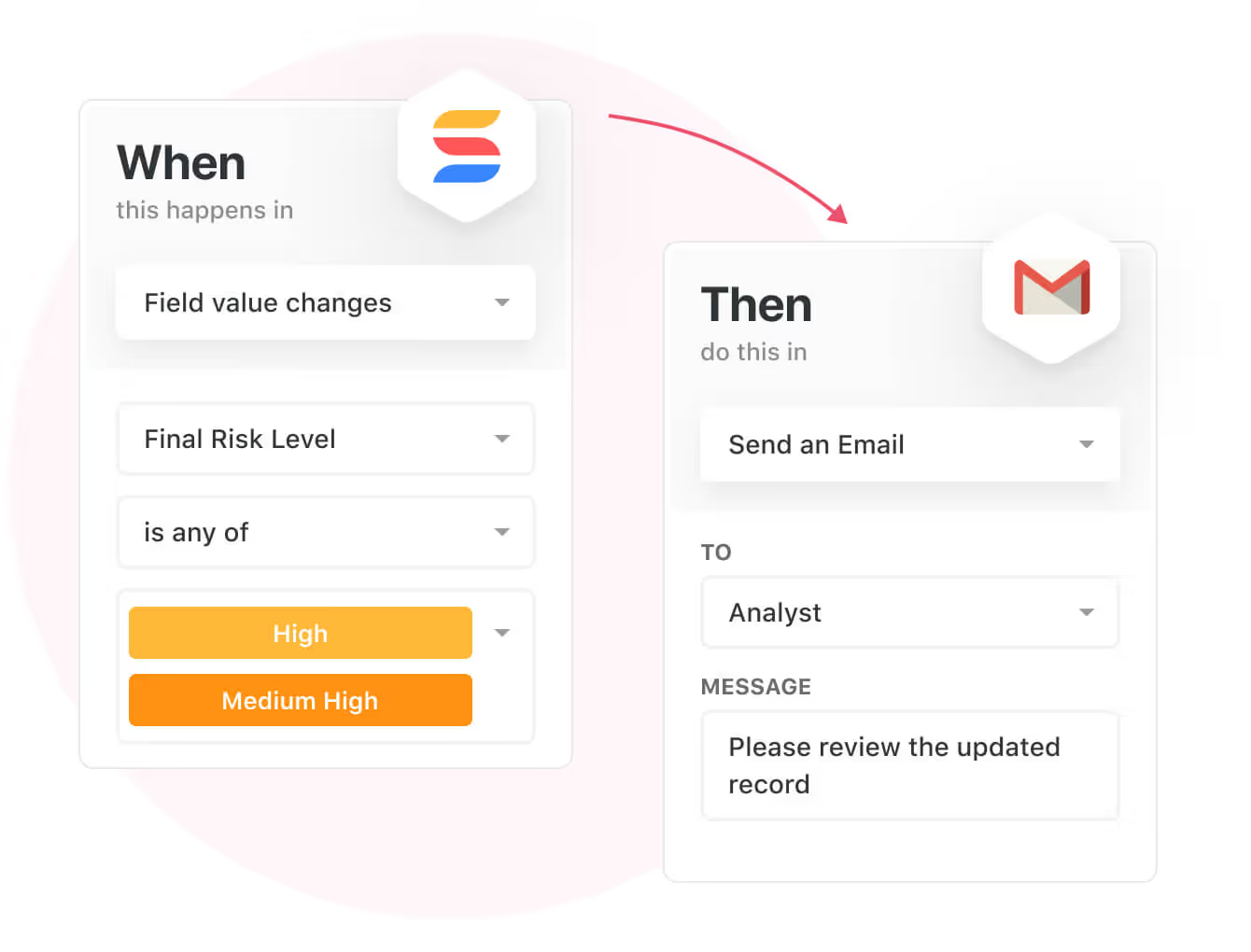
- Keep vendor and compliance data secure: Define teams and granular access controls to limit visibility to sensitive vendor files (e.g., contracts).
- Integrate with your existing systems: Pull vendor contract records from procurement systems or push assessment tasks into your ticketing system.
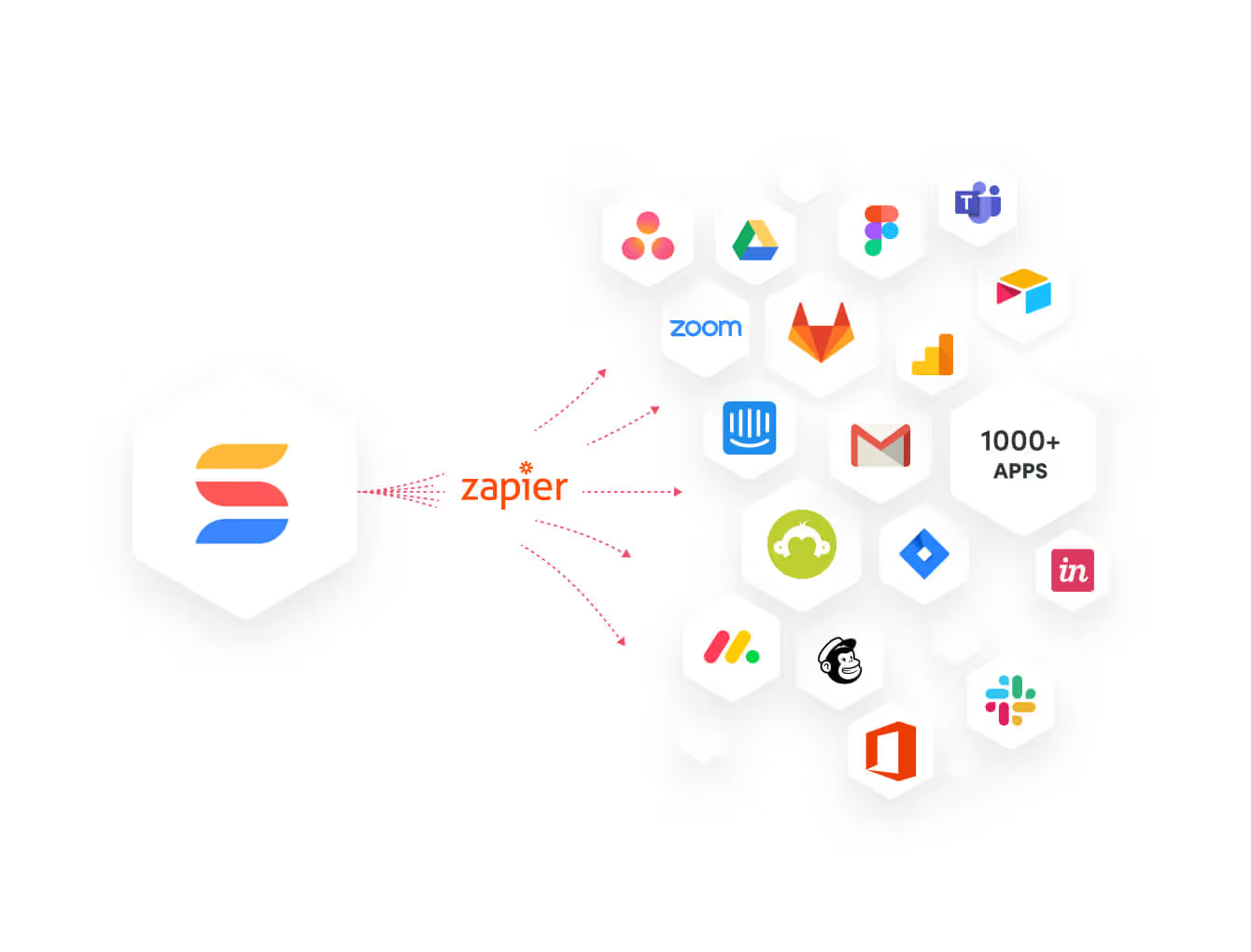
- Monitor, measure, and score: Drive automated lifecycle actions, such as increased monitoring, scheduled reassessment, or contractual remediation demands.
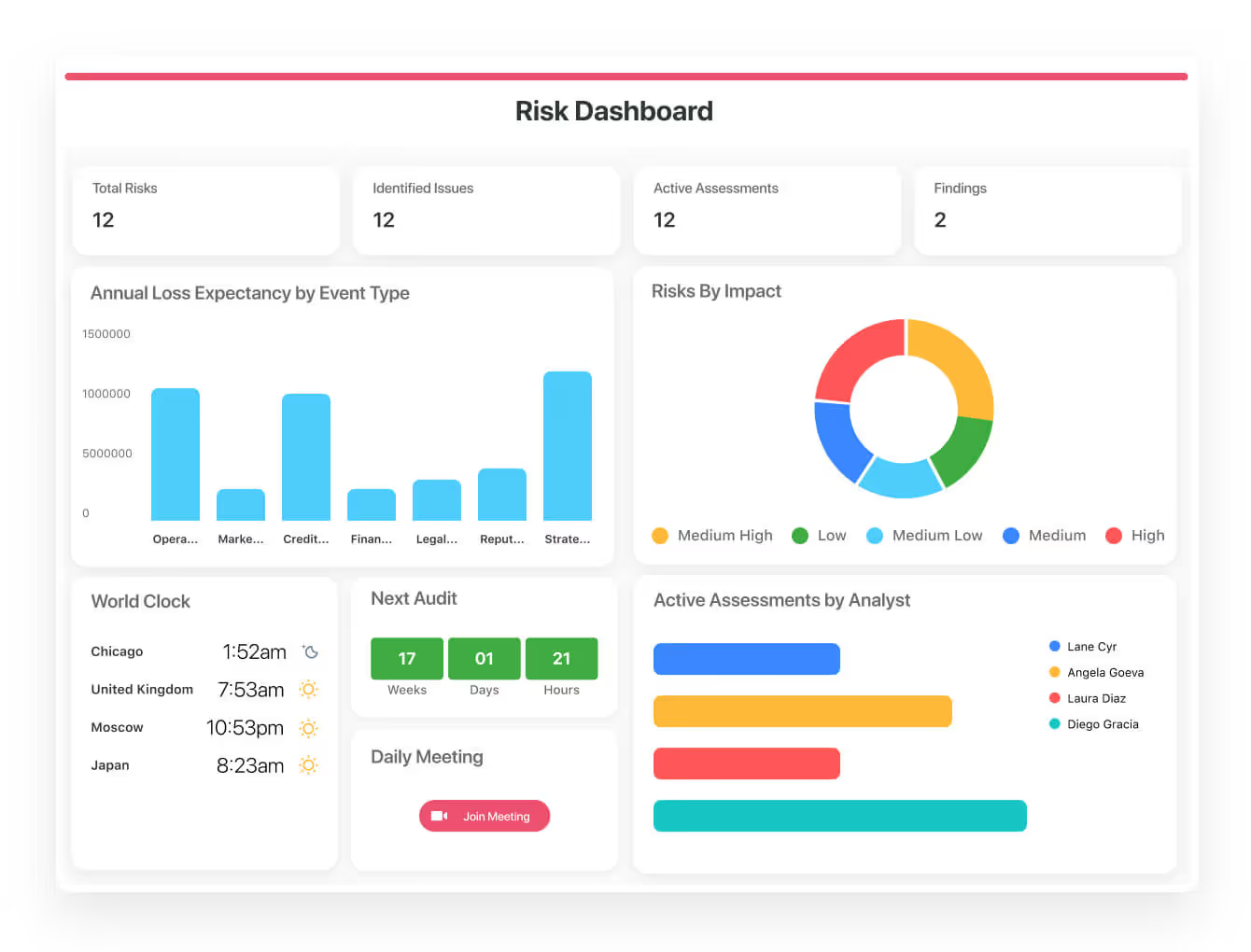
- Policy and contract lifecycle management: Establish a consistent policy framework and contract review cadence.
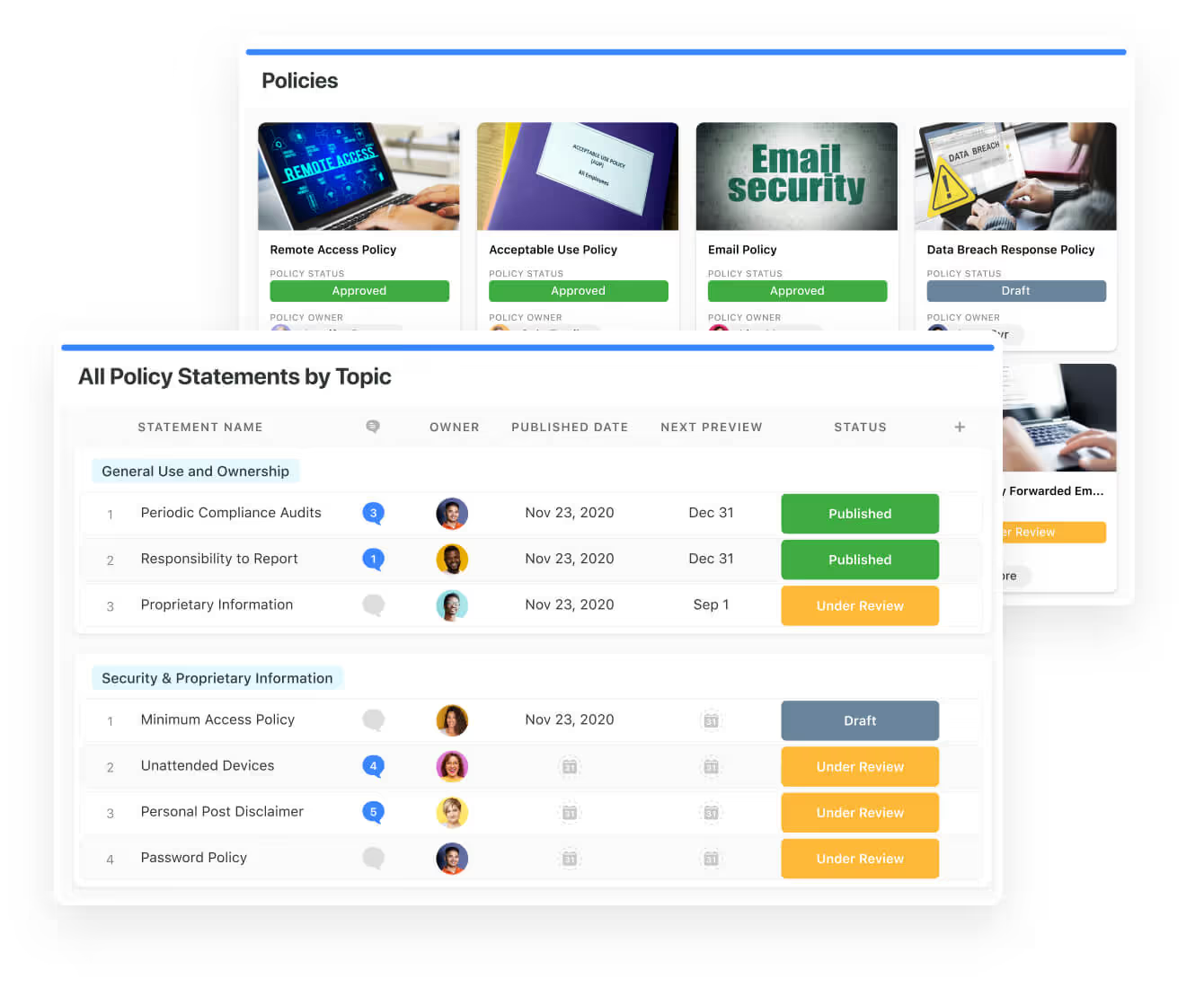
- Vendor performance and continuous monitoring: Track SLAs, delivery KPIs, audit findings, and corrective action completion.
You’ll be able to combine ongoing monitoring with periodic reassessments to maintain an accurate, up-to-date view of vendor risk.
Prioritize & Mitigate Vendor Risks
With SmartSuite, you can create a centralized risk register to effectively identify potential vendor risks to your organization.
Your team will be able to properly assess threats and establish risk mitigation strategies inside SmartSuite.
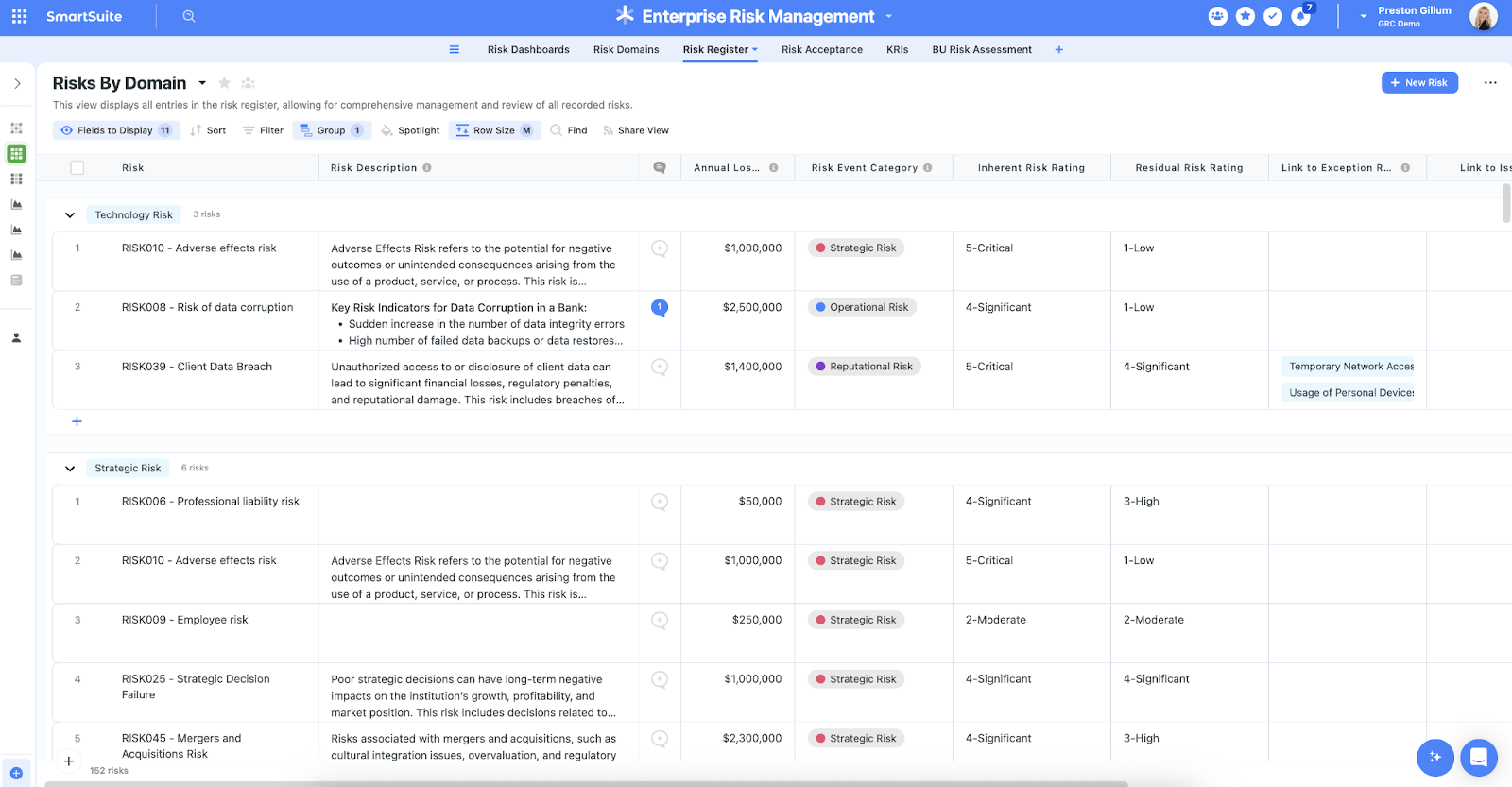
It’ll be possible to ensure that the appropriate controls are in place and measure their effectiveness by evaluating risk indicators and displaying results in SmartSuite’s rollup reports and dashboards.
💡 Pro Tip: Teams that use our platform use automation to move tasks through defined workflow stages that comply with their policies and procedures.
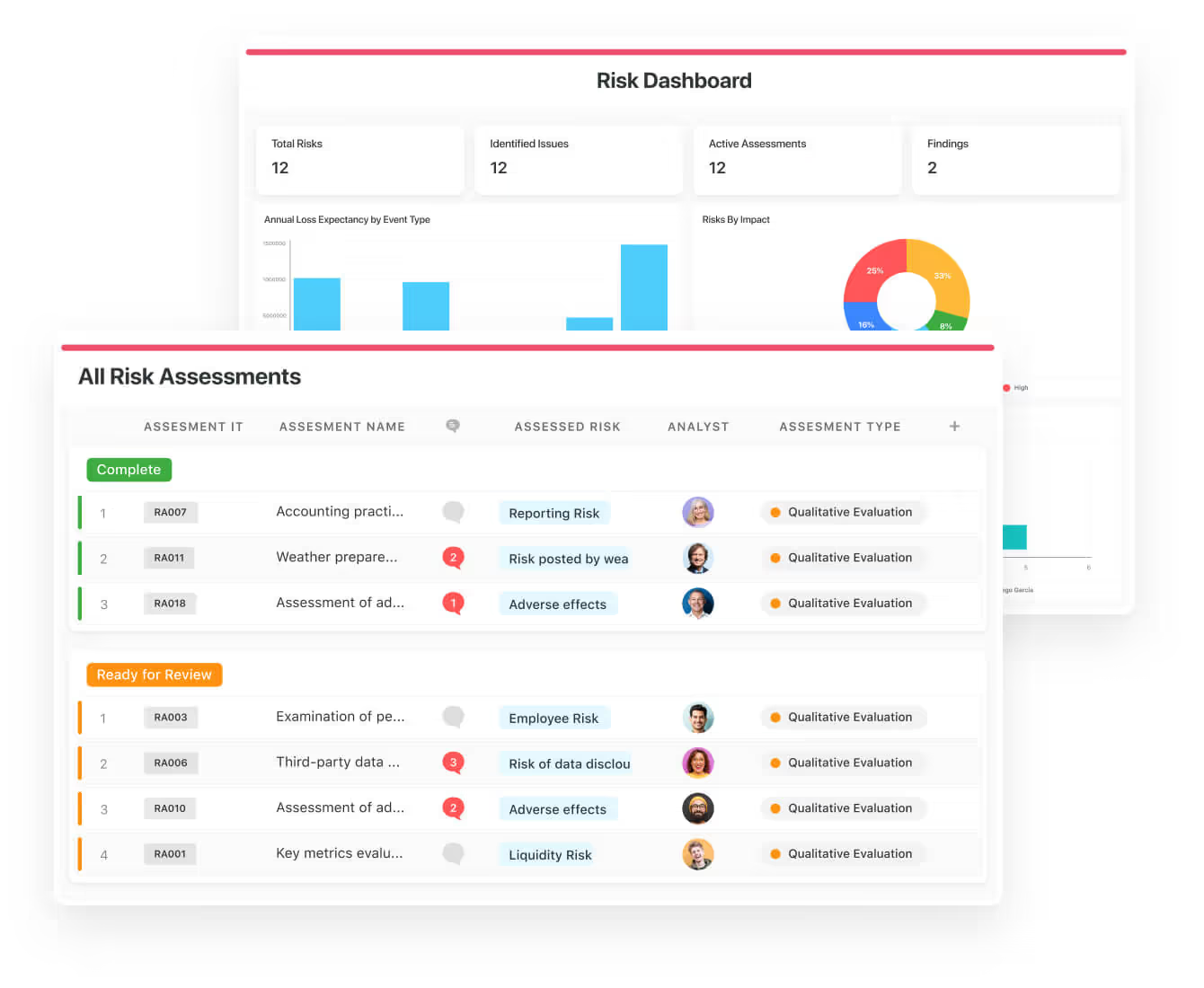
I understand how crucial threat management is and the need to respond quickly to incidents regarding your vendors.
Our platform lets you centralize incident response and threat mitigation by linking incidents to assets and organizational data to offer context during your investigations.
➡️ Your team can also set up automation with our no-code automation builder to escalate critical events to make sure that your team is aware of active vendor risks.
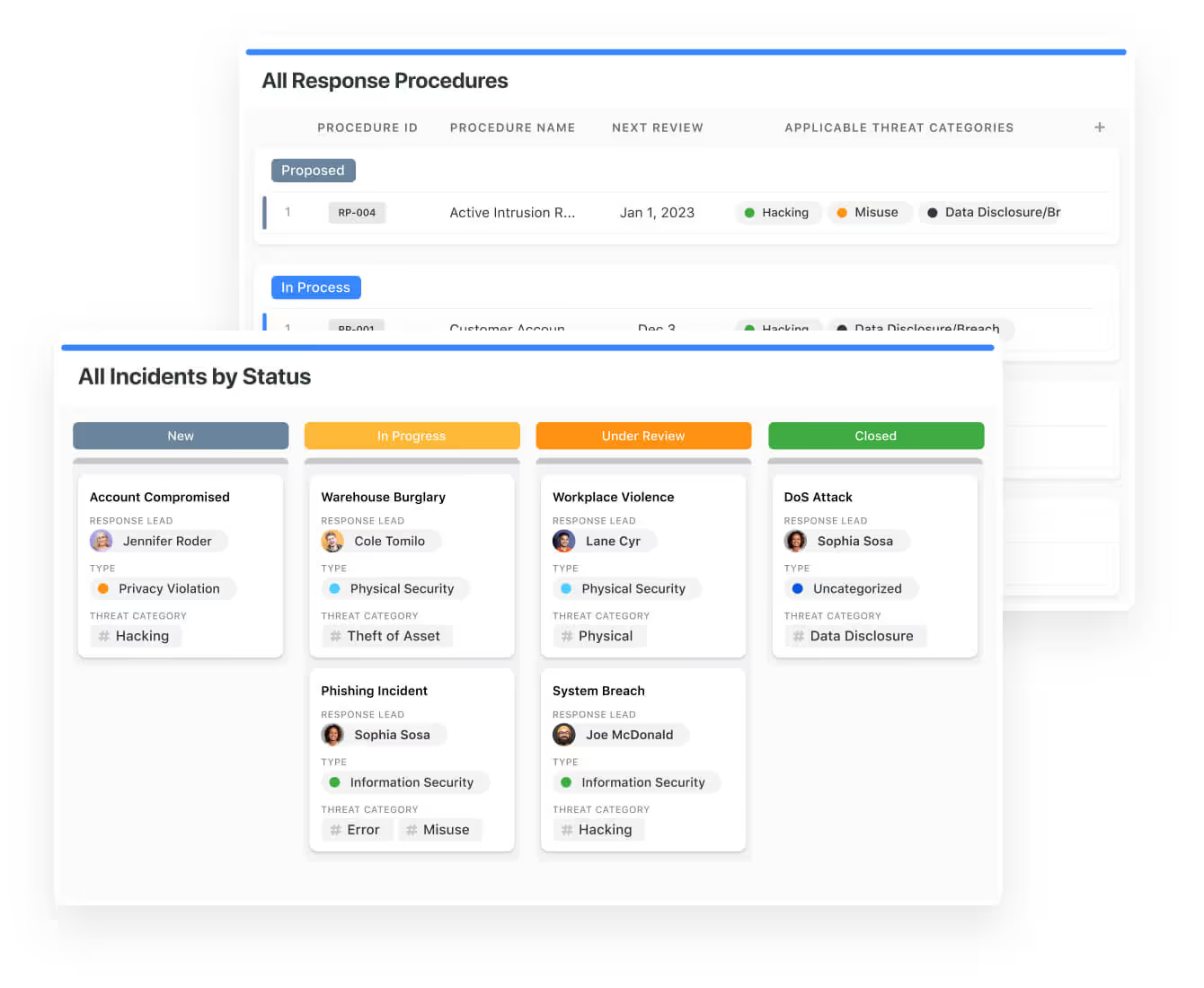
Ready-To-Use Vendor Management Template
We have prepared a vendor management template so that your team can get started with vendor management right away, instead of building everything from scratch.
Our vendor management template includes:
- Vendor profiles dashboard, which lets you see all vendor profiles, contract value, new engagements, and contracts executed.
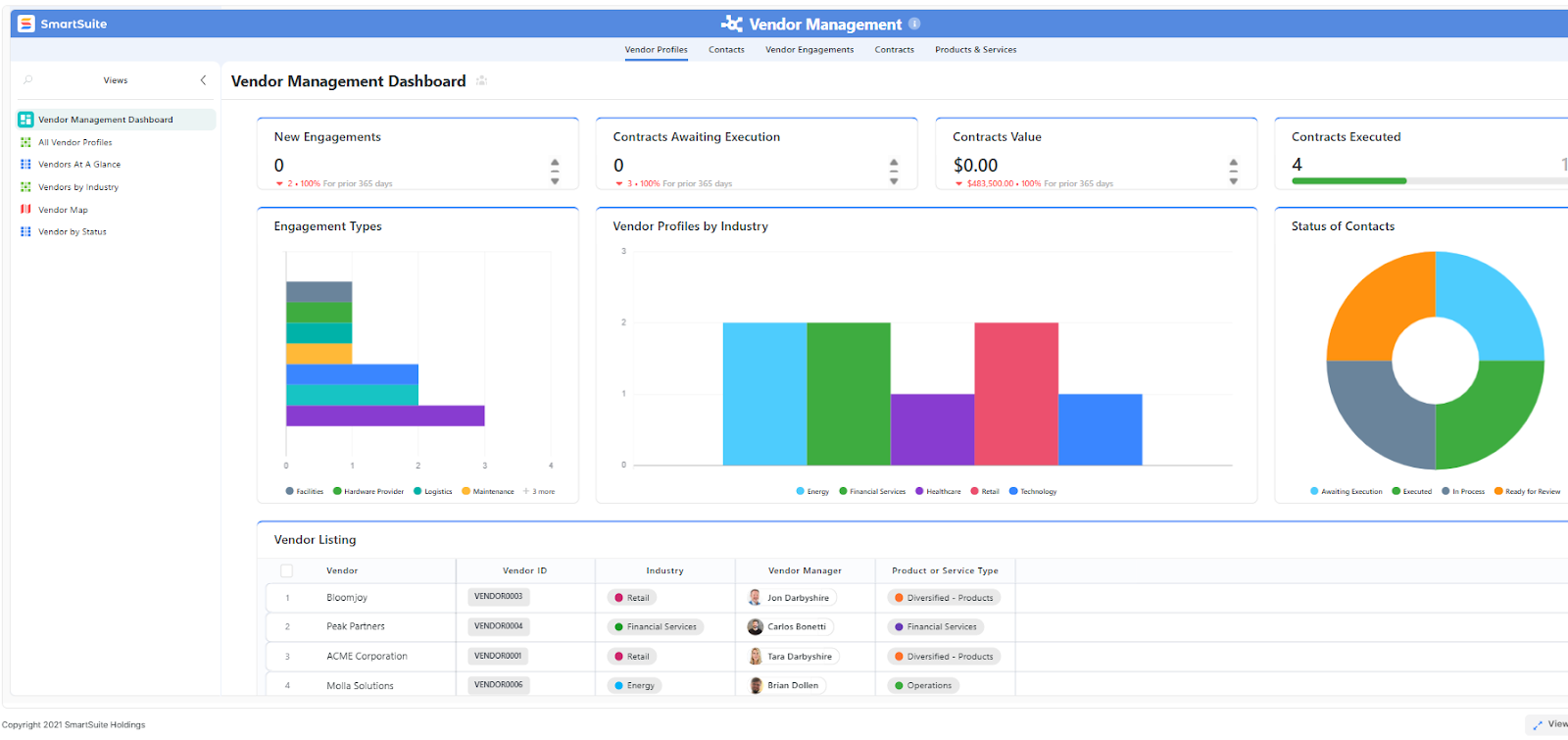
- Contacts overview, which will provide you with contacts by department, with the different stakeholders.
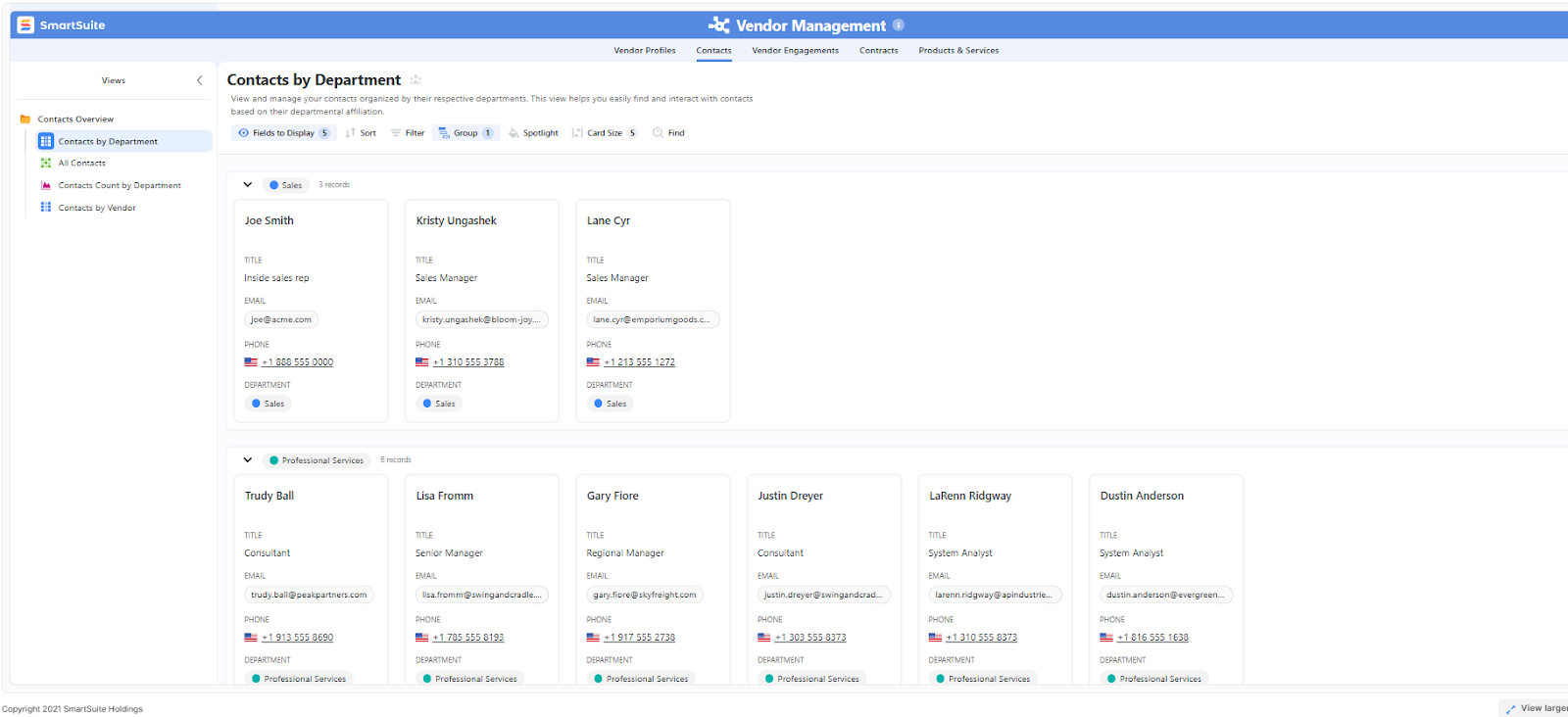
- Vendor engagements, where you will be able to see the different engagement names, vendor, end or renewal date, and status.

- A contracts template, which will provide you with a list of contracts in process, ready for review, and awaiting execution.

Alternatively, check out and customize our 14 other risk management templates for various use cases, such as contract management, policy management, and incident management.
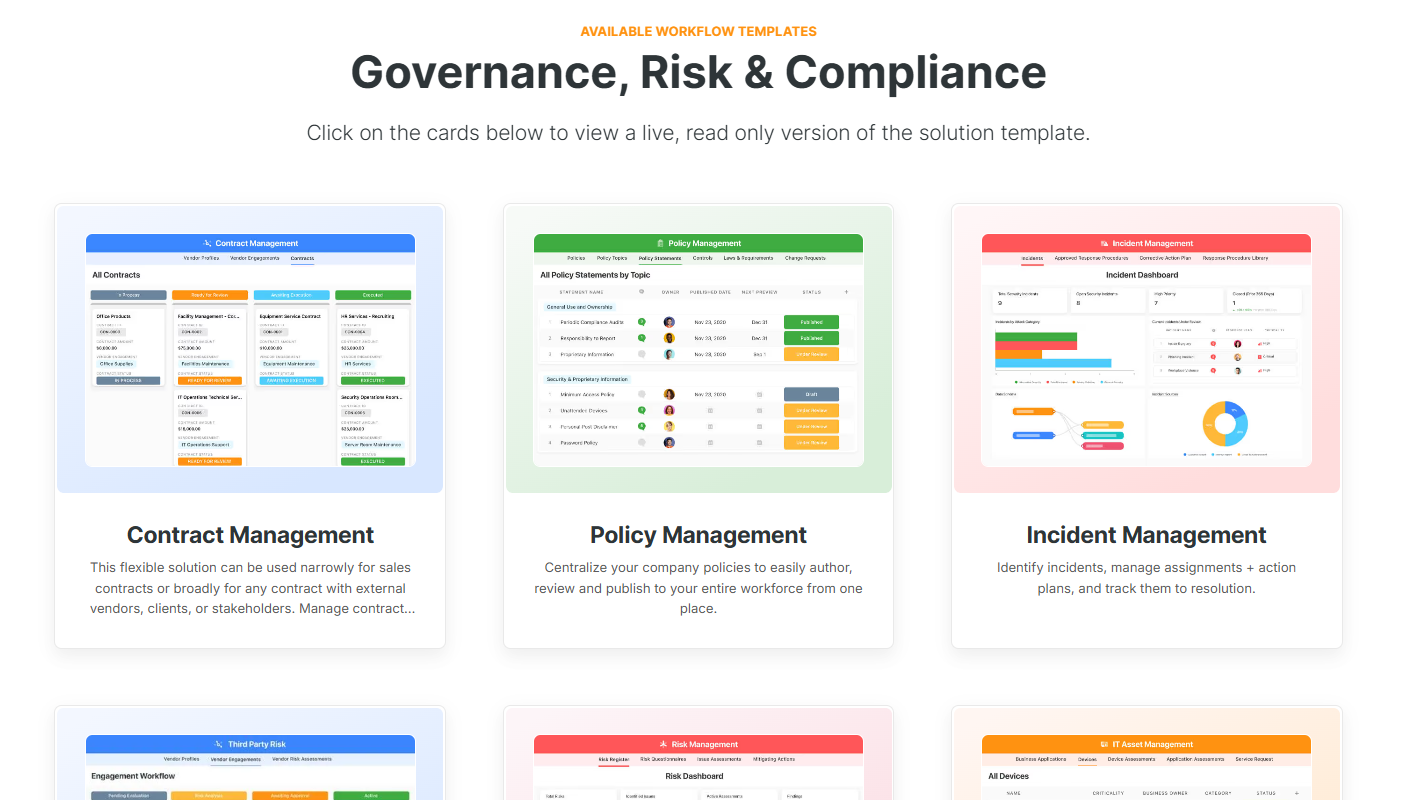
Pricing
SmartSuite has a free-forever plan with access to 250+ automation actions, team collaboration, multi-dashboard views, and more.
There are four paid plans with a 14-day free trial (no CC required):
- Team: Starts at $12/user per month, including Gantt charts, timeline views, 5000 automation runs, and native time tracking.
- Professional: Starts at $30/user per month and adds two-factor authentication, Gmail & Outlook integrations, and unlimited editors.
- Enterprise: Starts at $45/user/month and includes access to audit logs, data loss prevention, and 50,000 monthly API calls.
- Signature: A custom plan tailored to your needs and team size with no predefined limits.
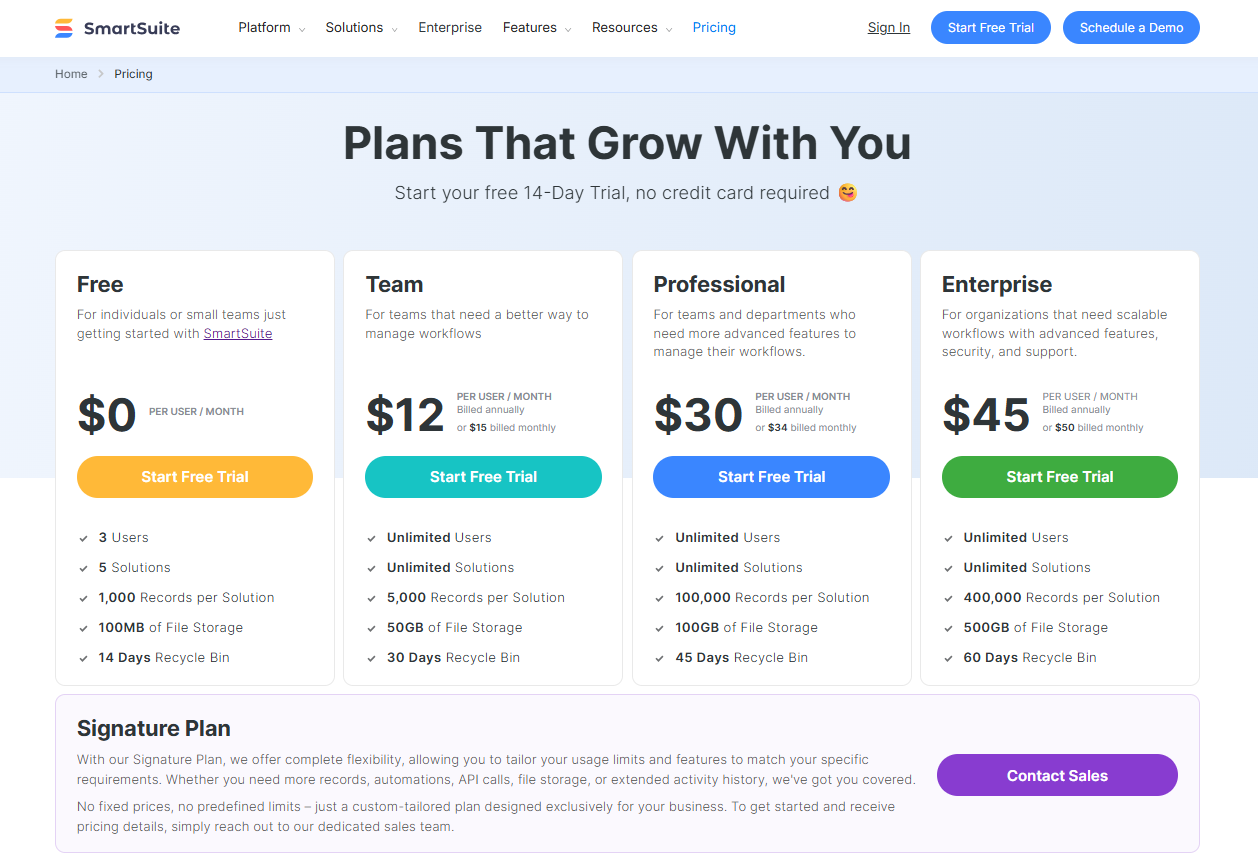
Pros & Cons
✅ A free-forever plan that includes access to advanced features of the tool for up to 5 solutions.
✅ Pre-built vendor management template so you can start right away.
✅ Dynamic dashboards and reports that are easy to build and navigate, unlike some alternatives that require you to hire consultants to do it.
✅ Centralized vendor profiles & document management
✅ Automate risk scoring, compliance tracking, audits, and vendor reviews.
✅ You can link incidents, asset data, and vendor access to give your investigators useful context.
❌ Fewer native integrations than specialist TPRM or legacy GRC platforms.
#2: OneTrust
Best for: Organizations that need a privacy-centric TPRM program with an extensive vendor intelligence exchange.
Similar to: ServiceNow.
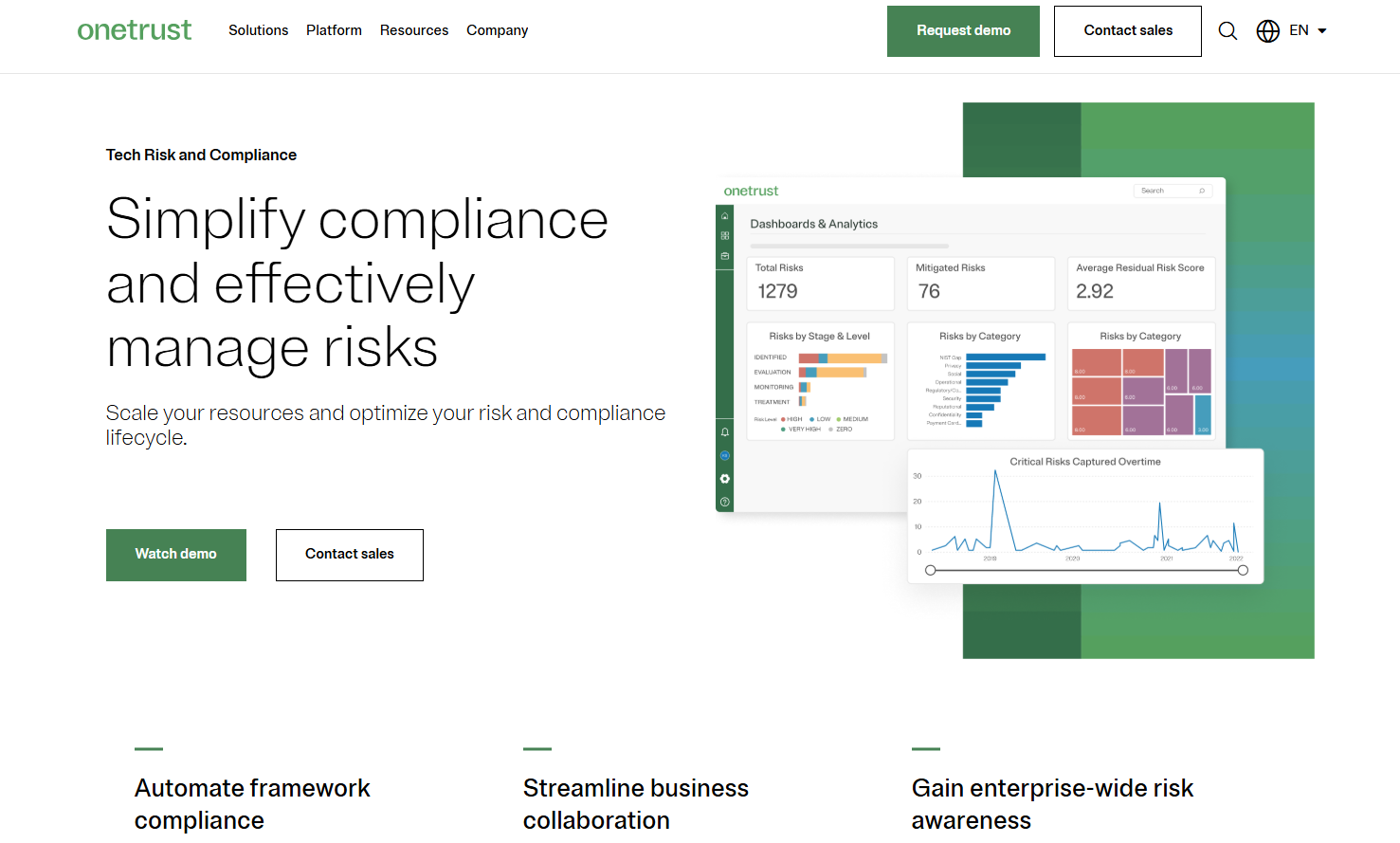
OneTrust excels at automating the full vendor lifecycle with strong privacy-first controls, pre-built frameworks, and a large vendor intelligence exchange that speeds due diligence.
What stood out to me about the tool is that it’s been designed to scale automated assessments, continuous monitoring, and reporting across privacy, security, and compliance domains.
Features
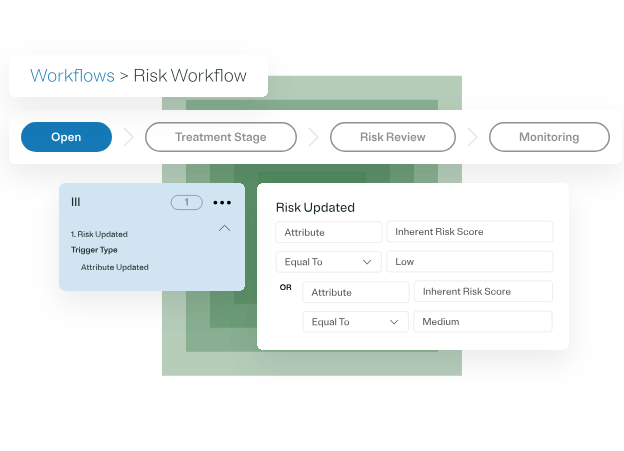
- Automated vendor assessments and continuous monitoring that combine privacy and security questionnaires with external risk feeds.
- You’ll be able to connect compliance teams and departments via automated workflows and 200+ pre-built integrations.
- Map systems, data, and risks in one unified view: You can prioritize action with dynamic scoring and strategic impact insights.
- Automatically generate the required controls and evidence tasks.
Standout Feature: Proprietary Shared Evidence Framework
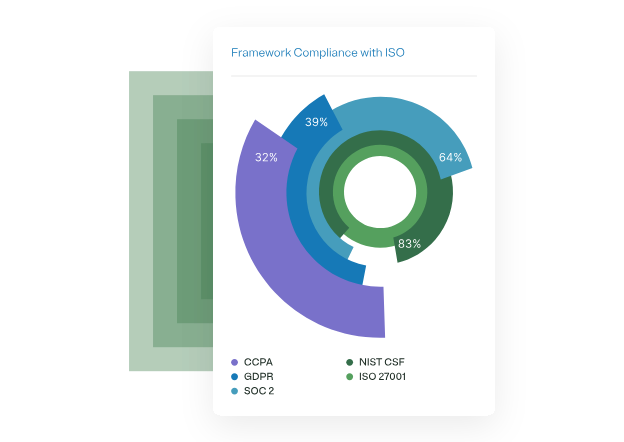
OneTrust lets you collect evidence once and comply across 50+ frameworks with OneTrust’s shared evidence framework to help you eliminate duplicate data requests.
Pricing
OneTrust has different pricing plans for its 5 product lines, all of which have custom pricing:
- Consent & Preferences: Capture and activate consent, preferences, and first-party data across your user touchpoints.
- Privacy Automation: Simplify compliance, improve operational efficiency, and help your business better use personal data.
- Third-Party Management: Third-party risk management and the ability to fully manage your third-party lifecycle.
- Tech Risk & Compliance: Scale governance, risk, and compliance, and mature your risk program.
- AI Governance: Gain visibility and control over your AI technology and empower risk-based decisions.

➡️ You can review our OneTrust pricing guide, where we cover how much the tool really costs.
Pros & Cons
✅ Collect evidence and comply across 50+ frameworks with OneTrust’s shared evidence framework.
✅ Strong privacy and consent controls make it ideal for organizations with heavy data-protection requirements.
✅ You can monitor and manage your program with dynamic dashboards.
❌ Can be expensive and complex to configure for smaller teams, which is why some people have been looking for OneTrust alternatives.
❌ The user interface has been described as outdated and not user-friendly by G2 reviews.
#3: Onspring
Best for: Teams that want a low-code platform to model custom vendor workflows and quickly iterate on TPRM processes.
Similar to: ArcherIRM.
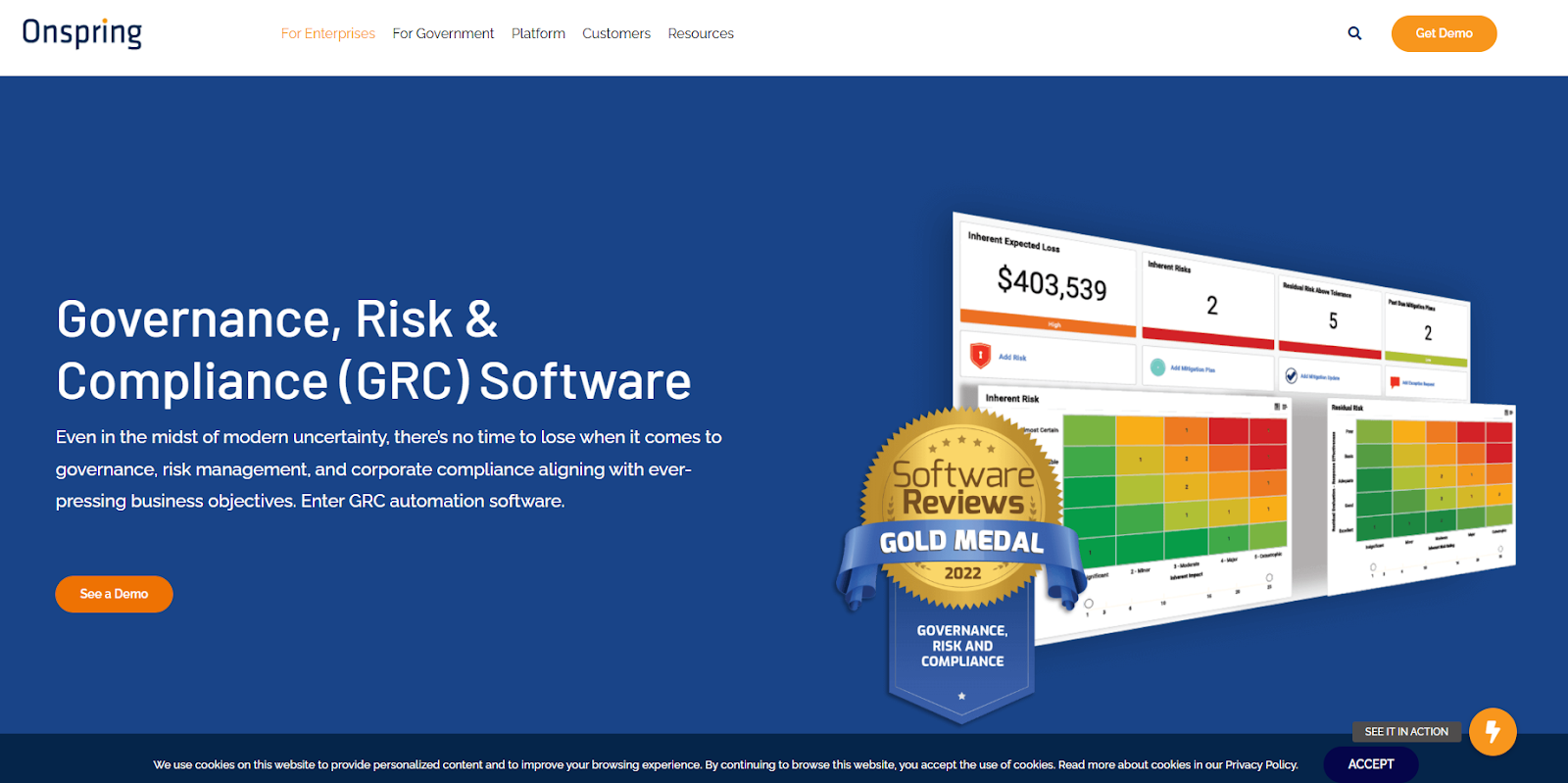
Onspring offers a configurable, process-centric TPRM solution that lets you automate onboarding, tiering, assessments, remediation, and reporting without heavy IT dependency.
The tool’s low-code flexibility makes it easy to map vendor workflows to your business processes and embed continuous monitoring.
Features
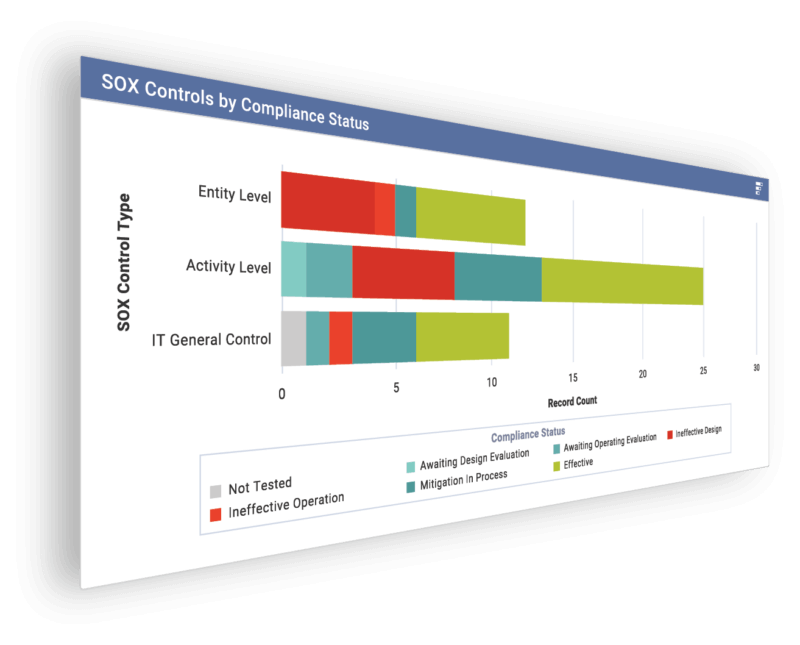
- Configurable vendor lifecycle workflows with tiered assessments, automated reminders, and remediation tracking to enforce SLAs and reduce manual follow-ups.
- You can create a comprehensive risk register and automate risk assessments.
- Assess, tier, and track vendors and integrate criticality ratings from cyber and financial monitoring services.
Standout Feature: Surveys for Easy Assessments of Vendors
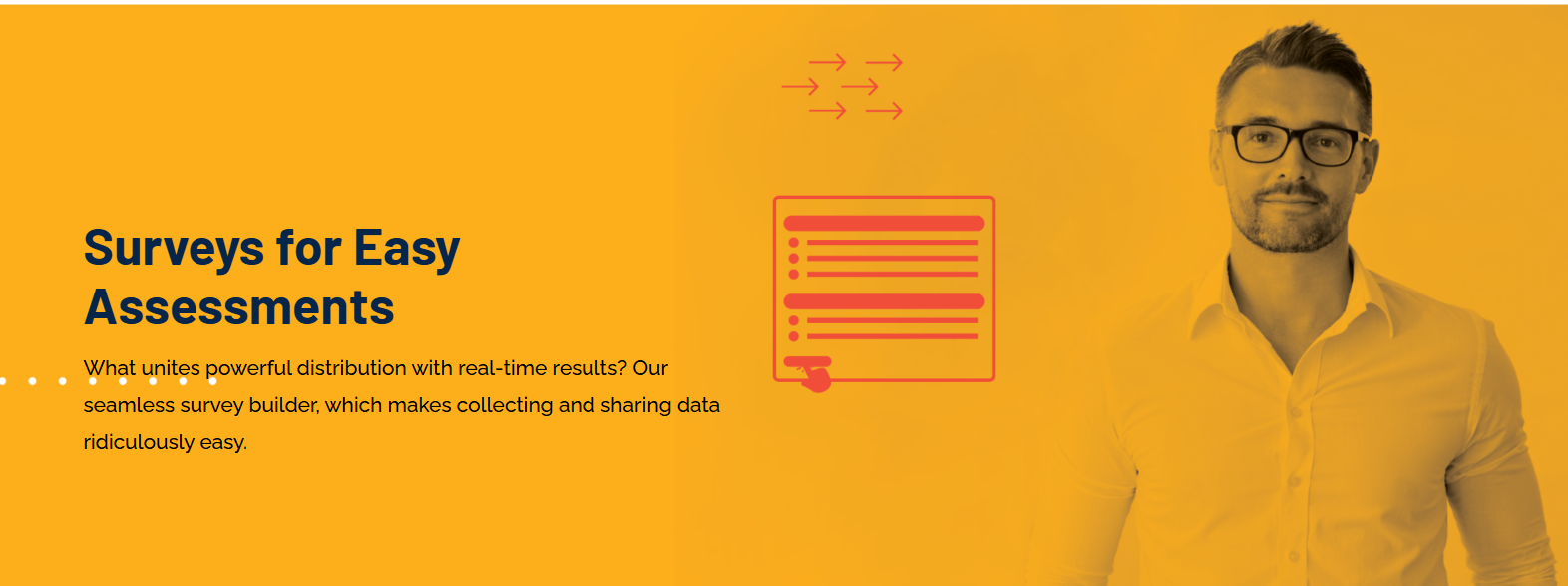
Onspring lets you use its point & click survey builder to build and send surveys to internal, external & third-party recipients.
It then automatically collects and scores results, assigns risk scores and can be customized to trigger follow-up actions.
Pricing
Onspring has 3 different pricing models that you can choose from based on which one better fits your needs:
- Pricing per user seat, where all users get access to all products on the Onspring platform.
- Pricing by product, where your team (with unlimited users) selects only a portion of the features to access.
- A hybrid model, where some users have unlimited access to the platform, while other users have limited access to other features.

After choosing your pricing model, Onspring offers four paid tiers – Bronze, Silver, Gold, and Platinum – each adding more capacity and features:
- Bronze plan includes access to the No-code Admin, SaaS System Upgrades, Platform Releases & Upgrades, and more.
- Silver plan includes more data storage and adds a non-production department environment, and 1K/month SMS messages with additional levels available.
- Gold plan includes greater data storage and support, and adds a database refresh (4x a year), IP firewall restriction changes, < 60-minute day support response time, and more.
- Platinum plan includes maximum data storage, API calls, 24/7 support, and adds non-production development, test, and sandbox environments, 8x/year database refreshes, dedicated Slack support channel, and more.
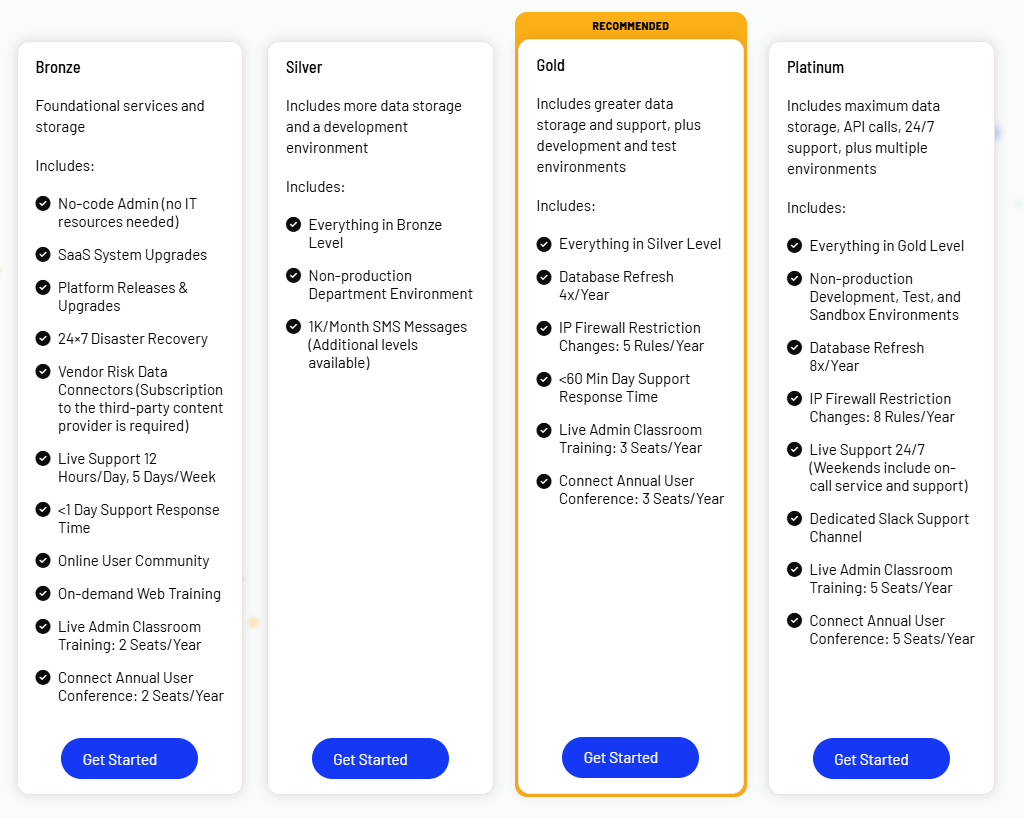
Pros & Cons
✅ Good flexibility and customization options, according to G2 reviews.
✅ Rapid configuration and strong workflow automation that reduces reliance on IT.
✅ Best-in-class reporting with live dashboards.
❌ Advanced reporting and enterprise integrations may require additional configuration.
❌ The tool has an outdated interface that can be hard to use for some users, which is why some people have been looking for Onspring alternatives.
#4: StandardFusion
Best for: Teams seeking a simple, cost-effective vendor management layer inside a broader GRC tool.
Similar to: IBM OpenPages.
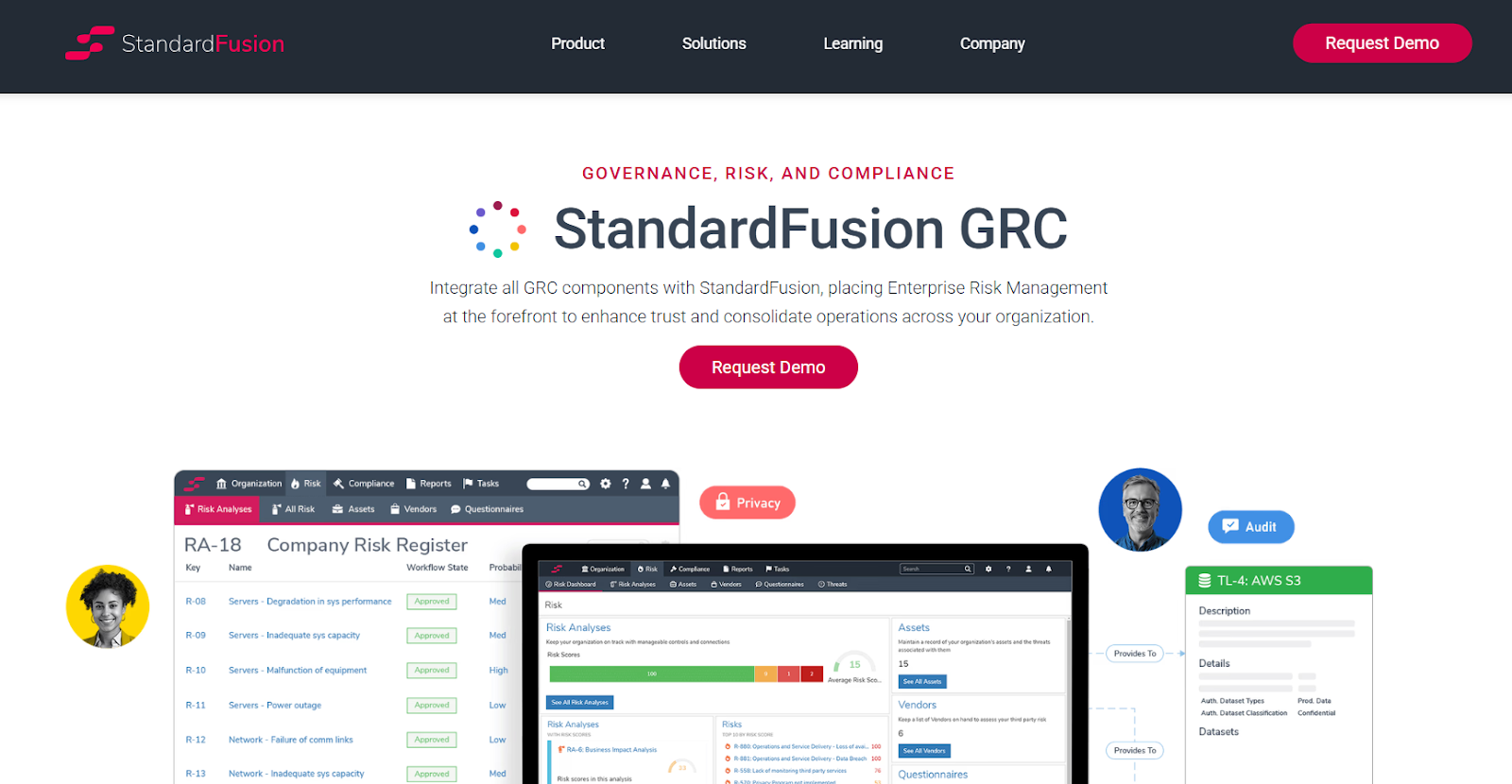
StandardFusion provides an easy-to-deploy GRC platform that centralizes vendor assessments, evidence collection, and compliance mapping.
The platform focuses on straightforward questionnaires, audit trails, and configurable dashboards so you can govern third parties without heavy implementation overhead.
Features
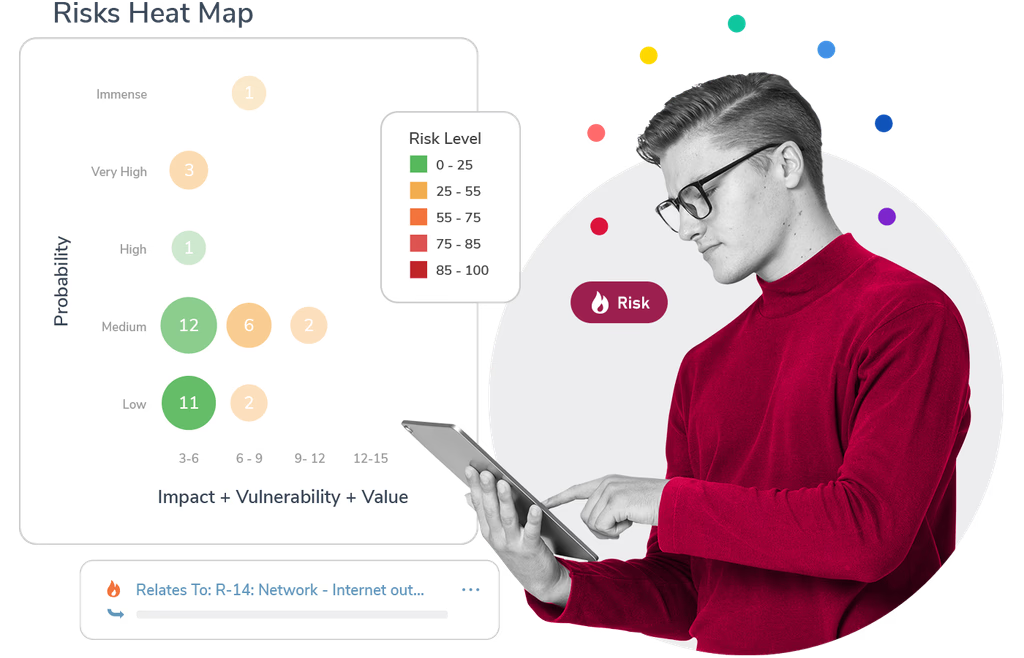
- Centralized vendor assessment and evidence repository with configurable control libraries and role-based dashboards for vendor oversight.
- Enterprise risk management integration that lets you guide all GRC activities for strategic decision-making and risk mitigation.
- Centralized data and analytics for monitoring internal controls.
Standout Feature: Automated Workflows
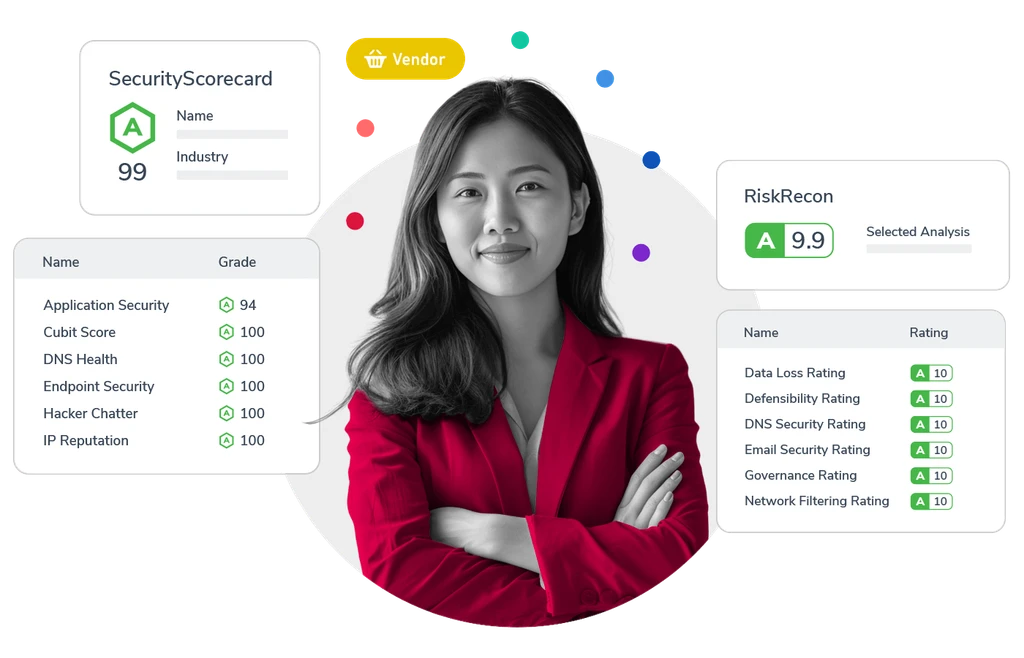
StandardFusion offers automated workflows that aim to streamline your GRC processes and reduce system complexity.
Pricing
StandardFusion does not currently disclose its pricing structure, so you’ll have to reach out to them to get a product demo and a quote.
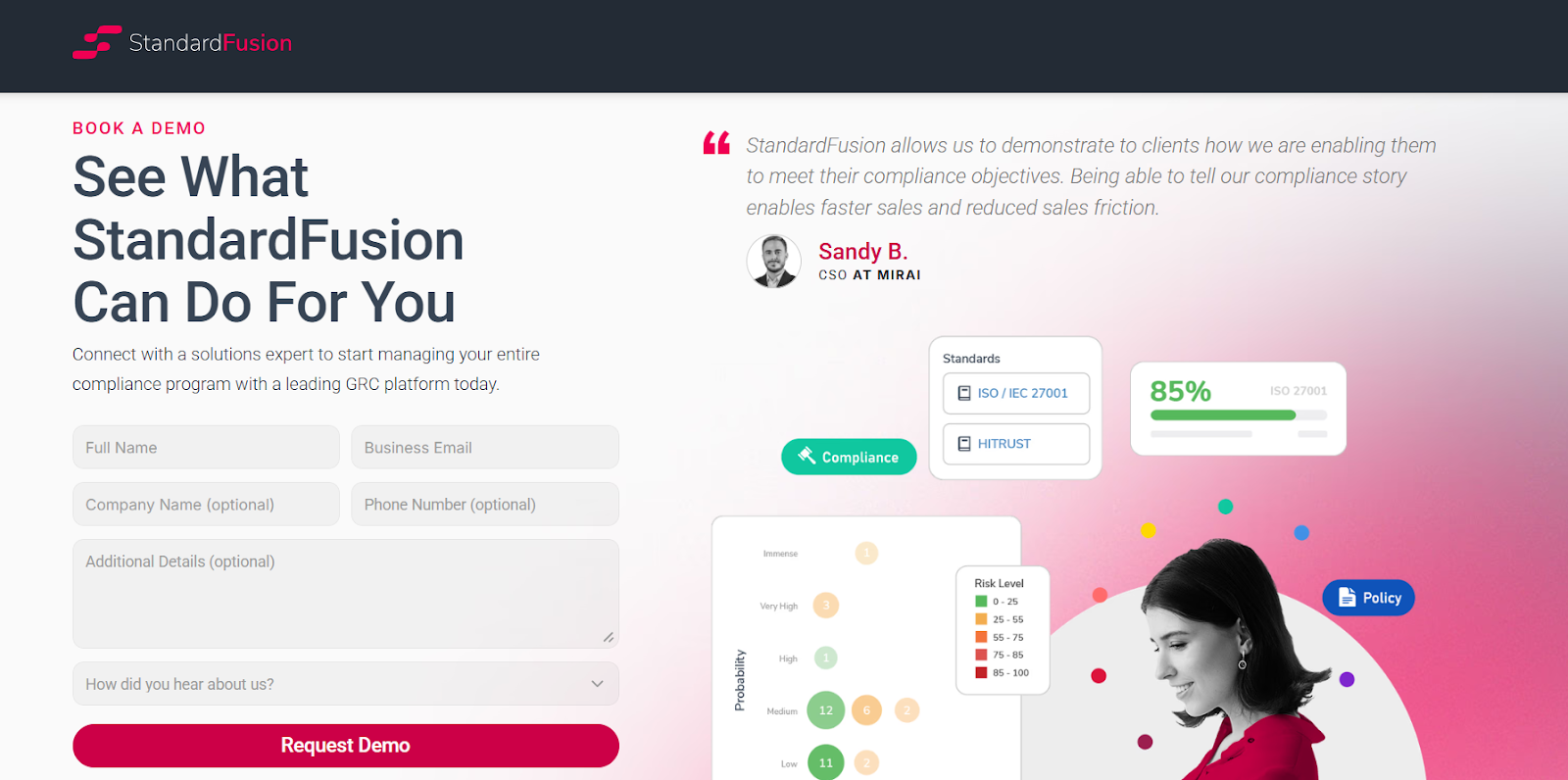
Pros & Cons
✅ Lightweight and easy to deploy.
✅ Comprehensive control, monitoring, and risk management features.
✅ Consolidates multiple compliance frameworks (e.g., ISO 27001, SOC 2, GDPR, HIPAA, NIST) in one platform.
❌ Lacks the deep enterprise scalability and advanced analytics of larger GRC suites, according to users of the platform.
❌ The platform’s annual price increases are a concern for smaller enterprises.
#5: MetricStream
Best for: Large enterprises that need a comprehensive, highly scalable TPRM capability embedded in a full-stack GRC platform.
Similar to: LogicGate, SAP GRC.
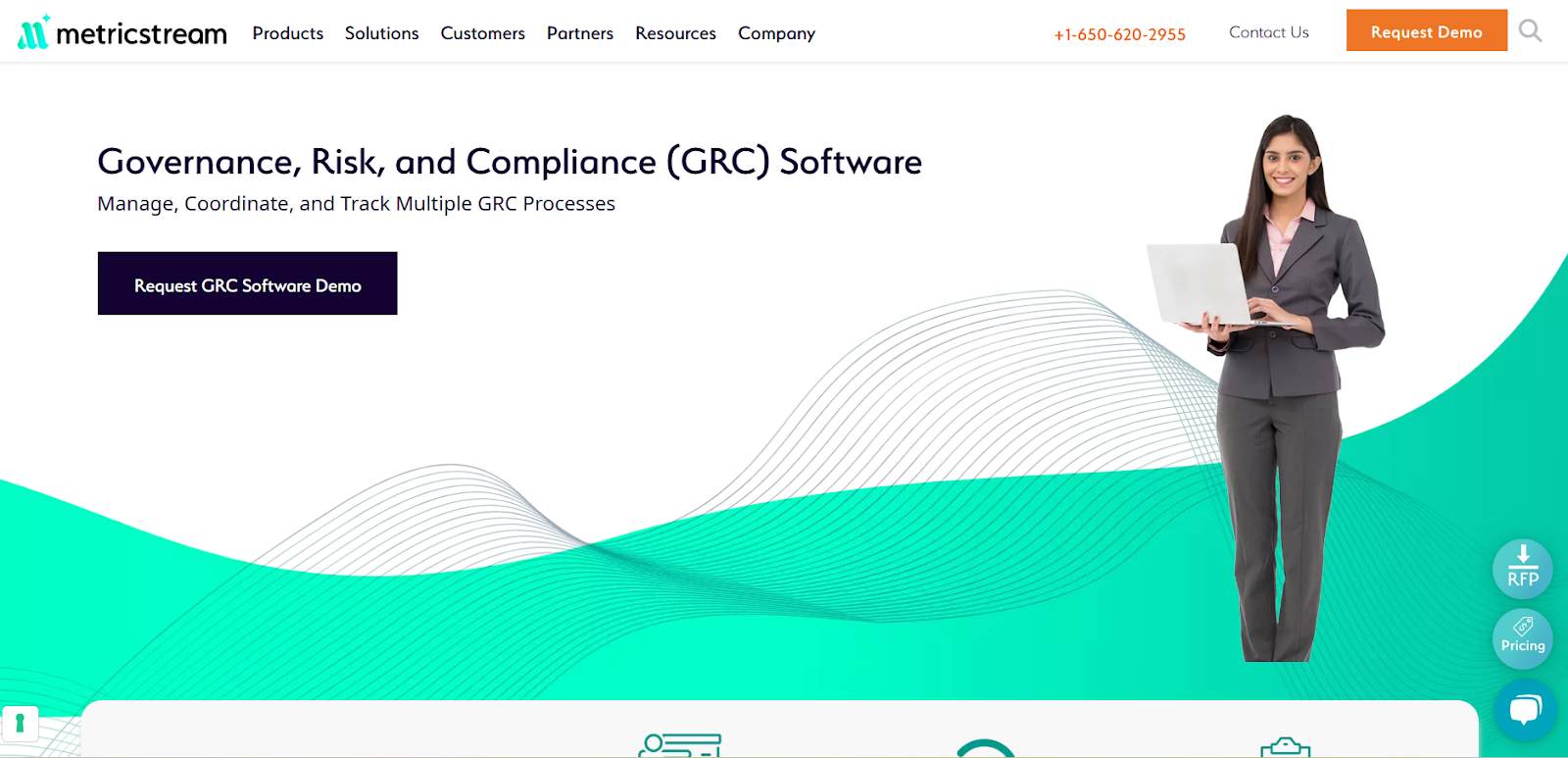
MetricStream delivers an enterprise-grade TPRM with end-to-end automation within an integrated GRC platform.
The tool provides large organizations a consolidated view of vendor and third-party exposures across risk, compliance, and controls.
Features
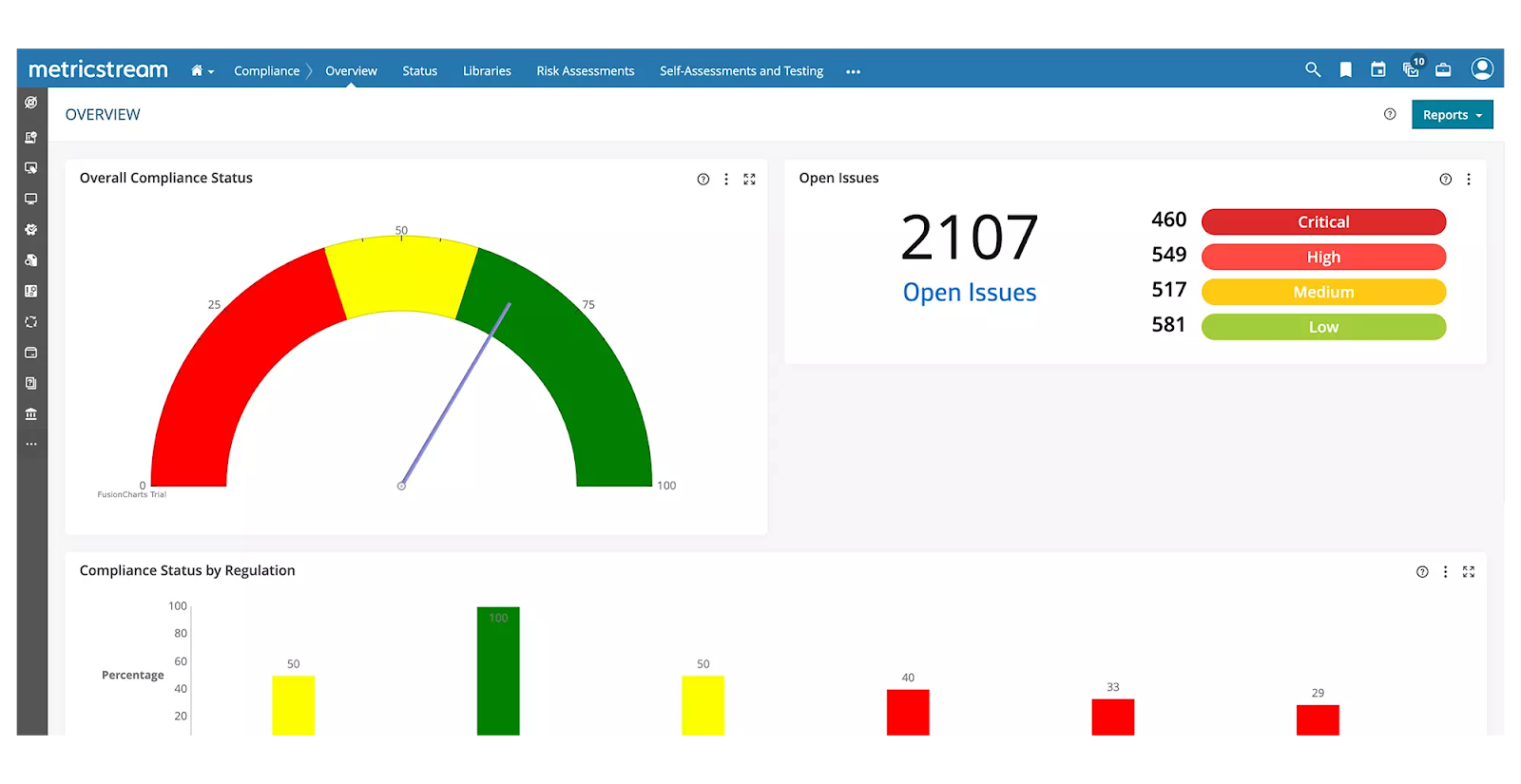
- End-to-end TPRM automation, including vendor onboarding, control assessments, continuous monitoring, and remediation workflows tied to a unified risk register.
- Cyber risk intelligence and unified IT risk management to proactively address threats and ensure regulatory compliance.
- Centralized third-party risk management, including performance tracking and business continuity risk assessment.
Standout Feature: AI-powered insights (AiSPIRE)
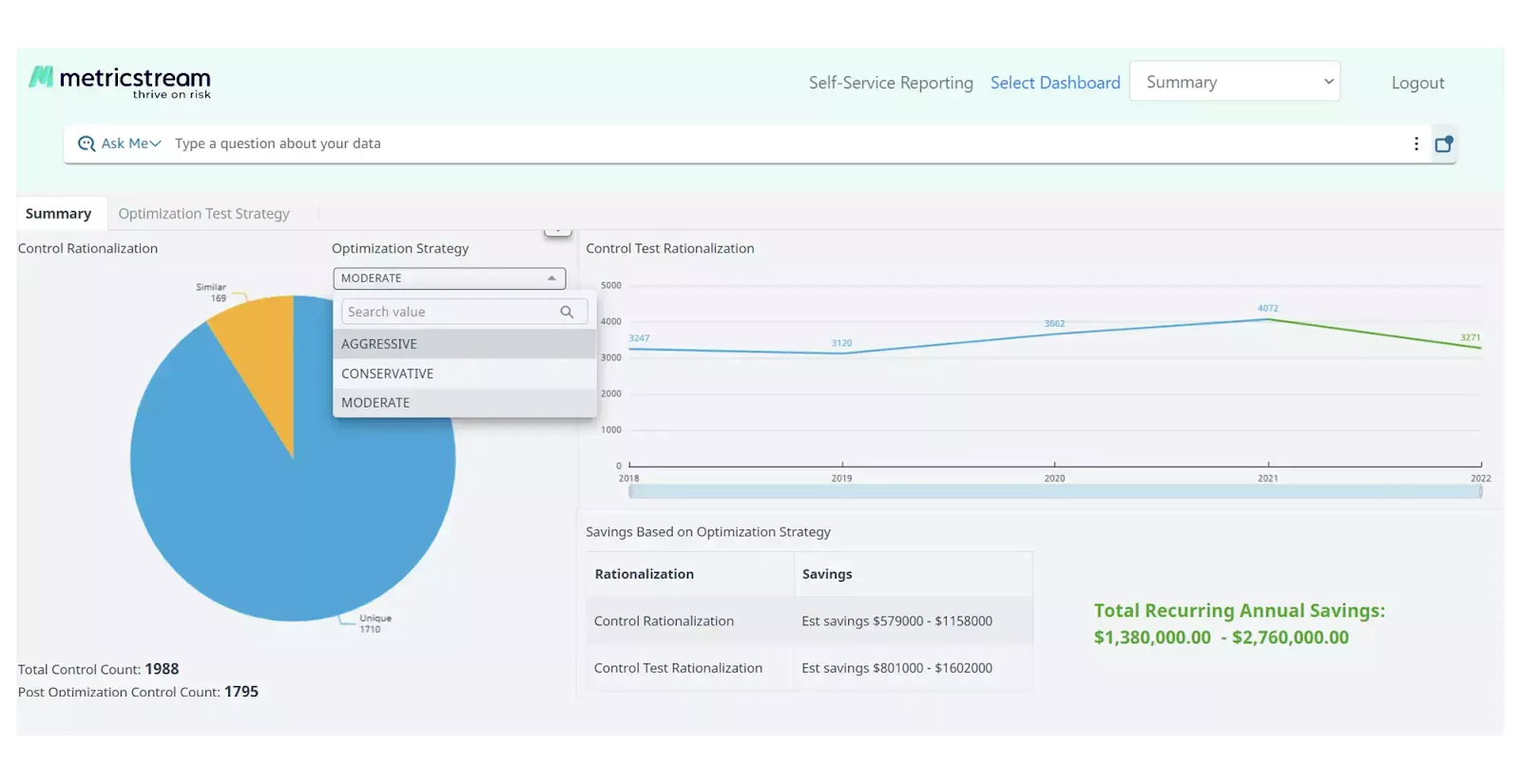
MetricStream stood out to me with its AI-powered insights solution, AiSPIRE, which can be used for predictive risk identification for vendors, duplicate control detection, and cognitive recommendations.
Pricing
MetricStream does not disclose its pricing structure, so you’d have to contact them to get a product demo and a quote.
However, our team did some digging and created an in-depth MetricStream pricing guide, where I found some reported numbers:
- Small enterprise deployment costs between $75,000 - $150,000 per year.
- Medium enterprise deployment costs between $250,000 - $500,000 per year.
- Large enterprise deployment can cost between $750,000 - $1,000,000 per year.
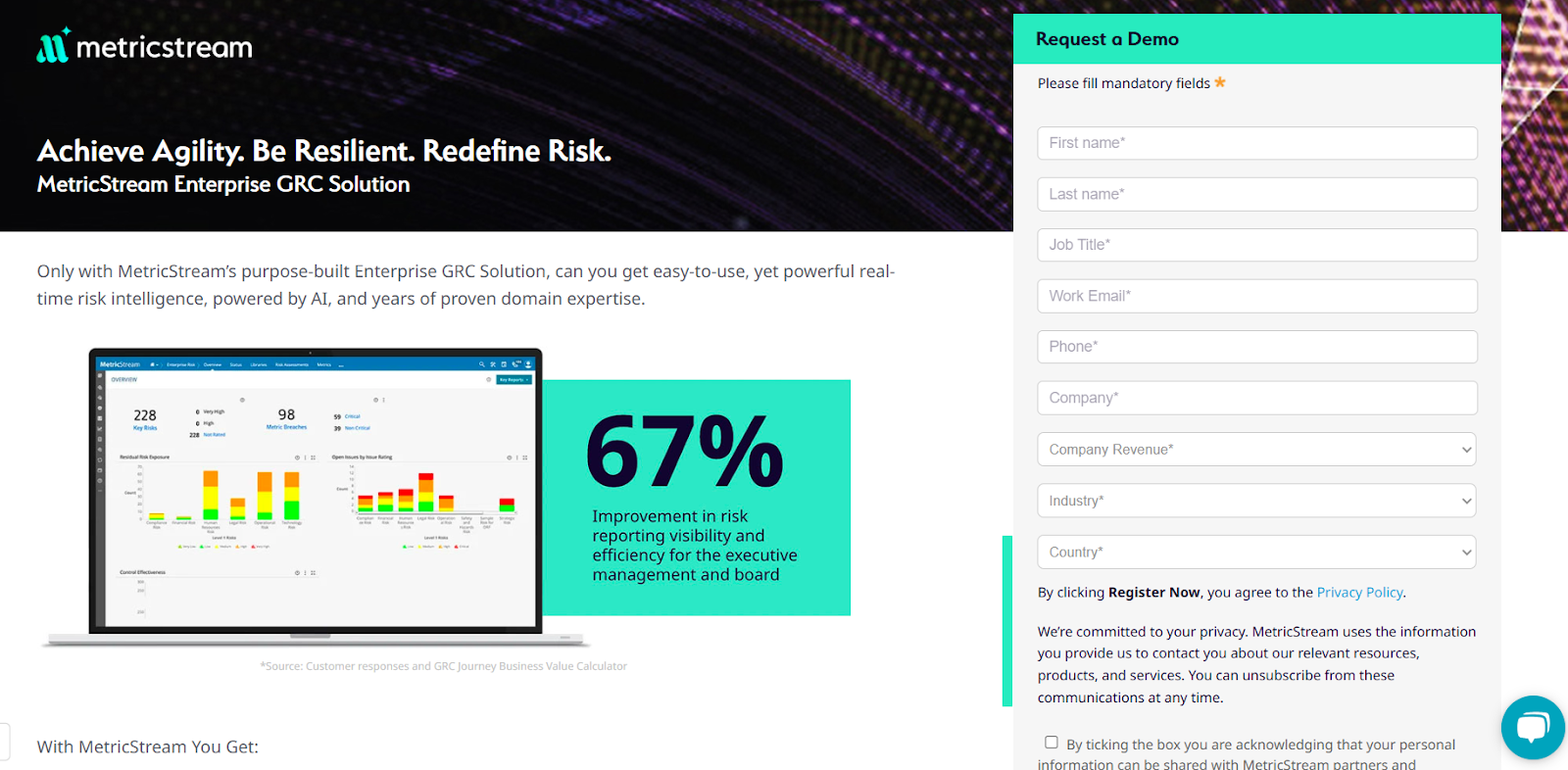
Pros & Cons
✅ Comprehensive feature set and scalability for complex global vendor programs.
✅ Advanced analytics alongside real-time reporting.
✅ An AI-powered insights tool, AiSPIRE, that you can use for predictive risk identification.
❌ Implementation and licensing can be lengthy and costly for smaller organizations.
❌ The interface can be hard to navigate, which is why some users look for MetricStream alternatives.
#6: ServiceNow
Best for: Organizations that want VRM tightly integrated with ITSM, CMDB, and enterprise workflows for rapid operational response.
Similar to: SAI360.
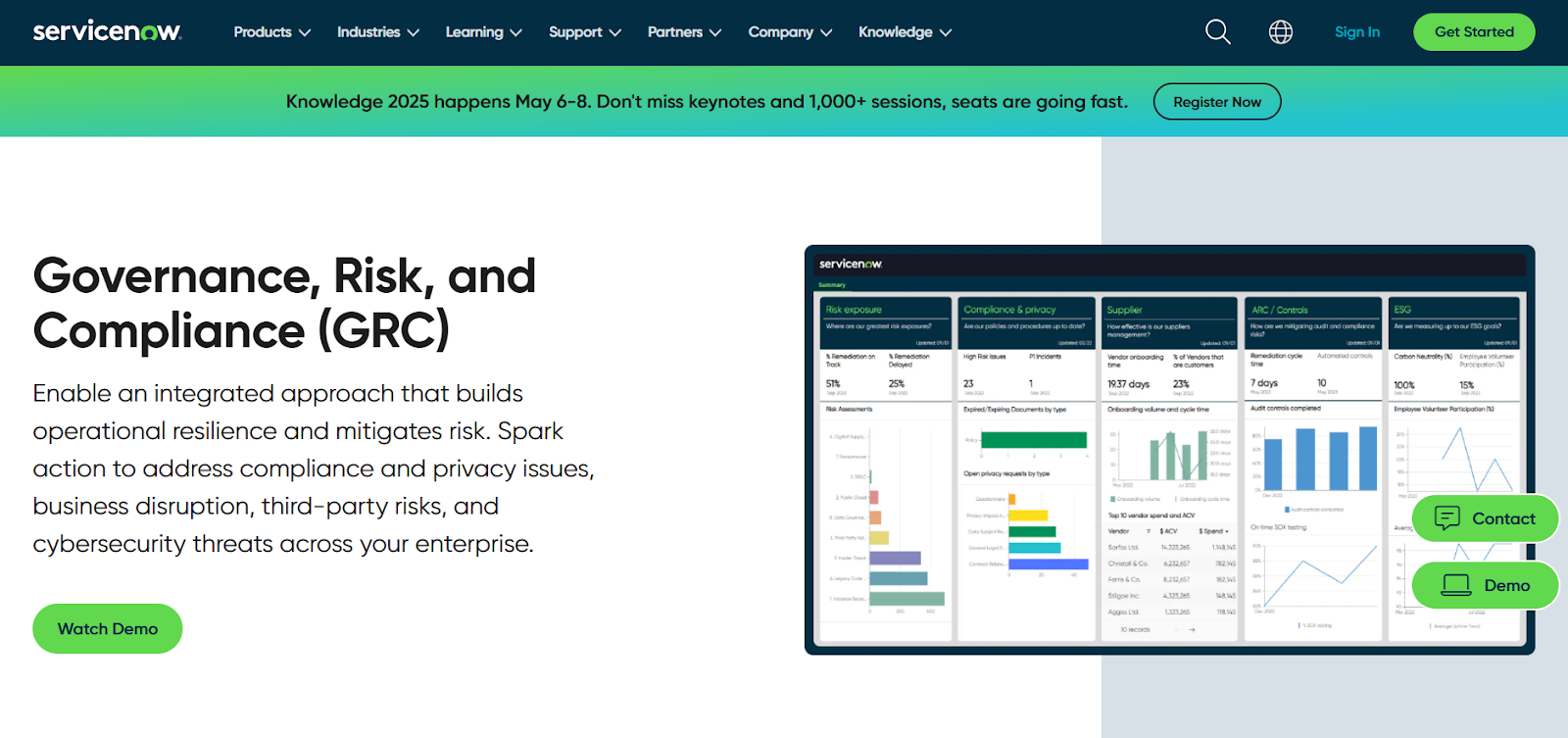
ServiceNow’s Vendor Risk Management provides you with automated vendor tiering, integrated risk scores, a supplier portal, and strong workflow integration with ITSM, CMDB and incident processes.
What I like about this tight operational integration is that it enables rapid response when vendor issues surface and centralizes vendor communications and evidence.
Features
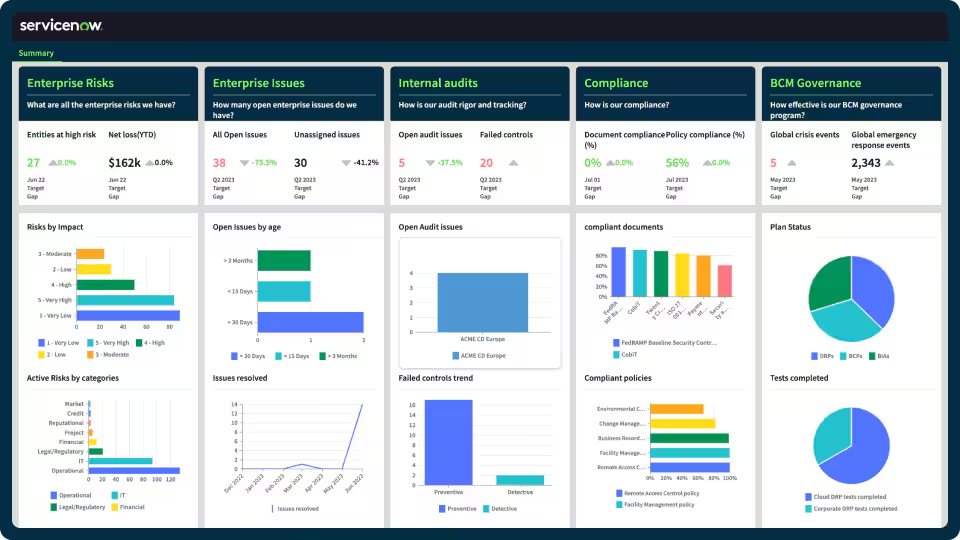
- Automated vendor tiering and assessment management with a supplier portal and enrichment from external content providers for dynamic risk scoring.
- Workflow-driven vendor risk management integrated with ITSM, security incidents, and the CMDB for contextual impact analysis.
- The vendor management solution operates on ServiceNow’s Now Platform, which enables seamless data sharing and real-time collaboration across all GRC products.
➡️ You can learn more about ServiceNow in our comprehensive ServiceNow review.
Standout Feature: AI-Powered Actionable Insights
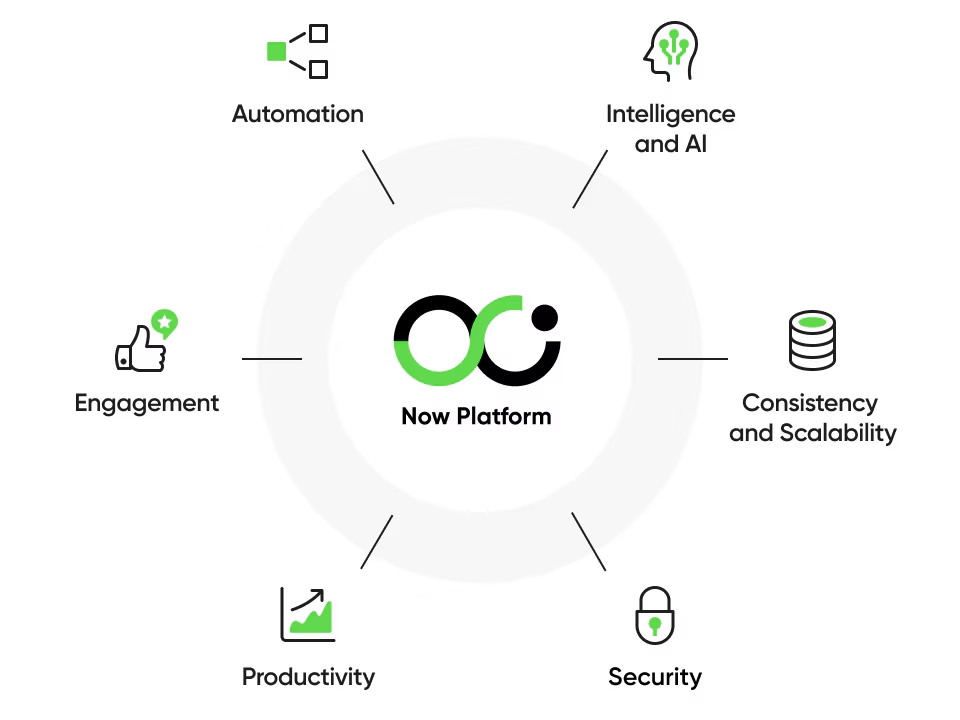
ServiceNow stood out to me with its AI-powered actionable insights that help you accelerate decision-making with predictive analytics and process optimization.
Pricing
ServiceNow’s pricing is not disclosed, so you’d have to book a demo with their team.
We found ServiceNow customer and public reviews, which show that the average cost of ServiceNow contracts can range between $50,000 and $500,000 annually.
Apparently, the pricing structure depends on the number of licenses, features, and other configuration requirements.
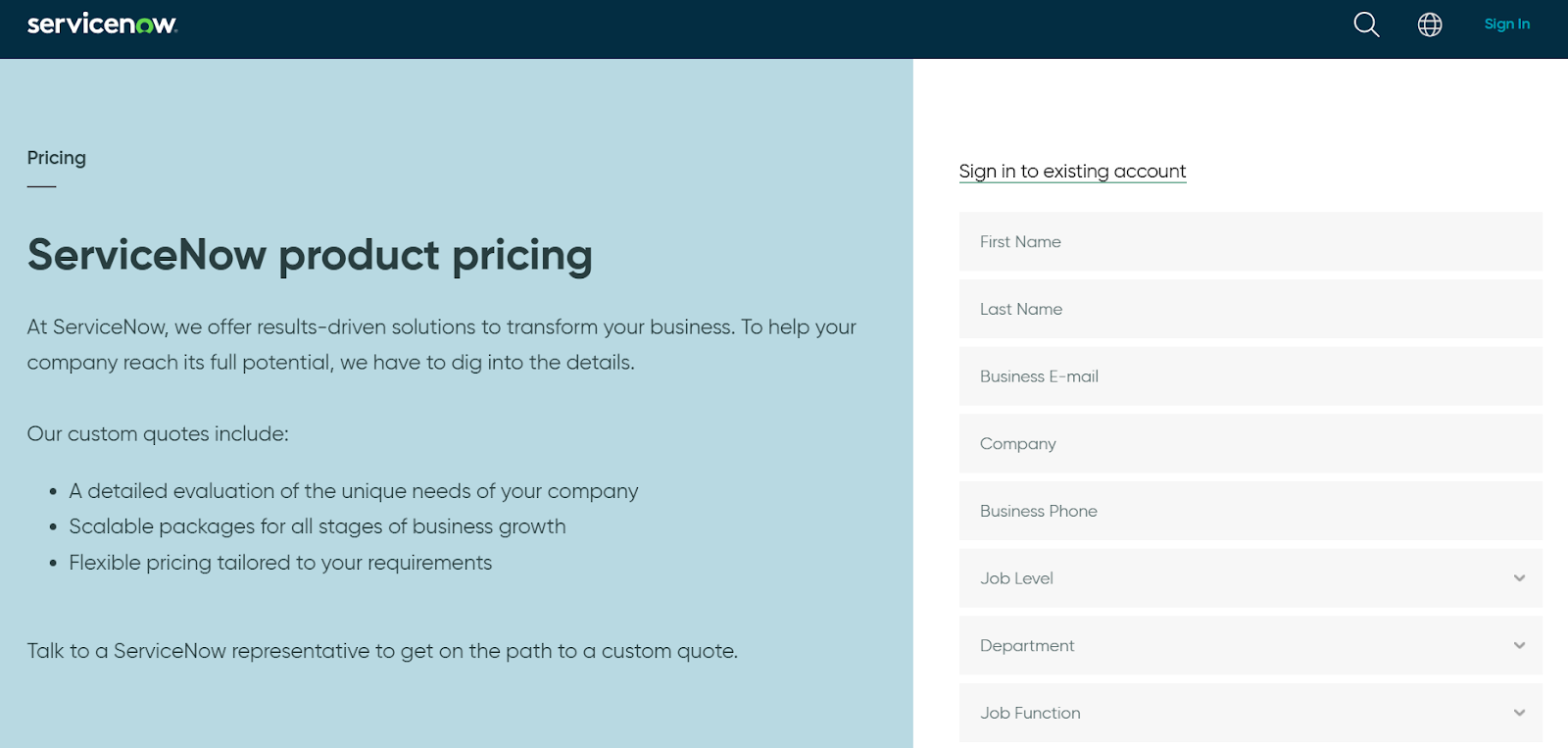
Pros & Cons
✅ Comprehensive risk, audit, and compliance management features.
✅ Excellent for IT-centric organizations that need VRM embedded in operational workflows and incident response.
✅ A comprehensive range of native integrations with other tools.
❌ Steep learning curve and complexity, unlike some ServiceNow alternatives.
❌ Organizations without existing ServiceNow investments may find it expensive and heavyweight.
#7: AuditBoard
Best for: Internal audit and compliance teams that want an audit-centric TPRM tool with strong automation and reporting capabilities.
Similar to: LogicGate.
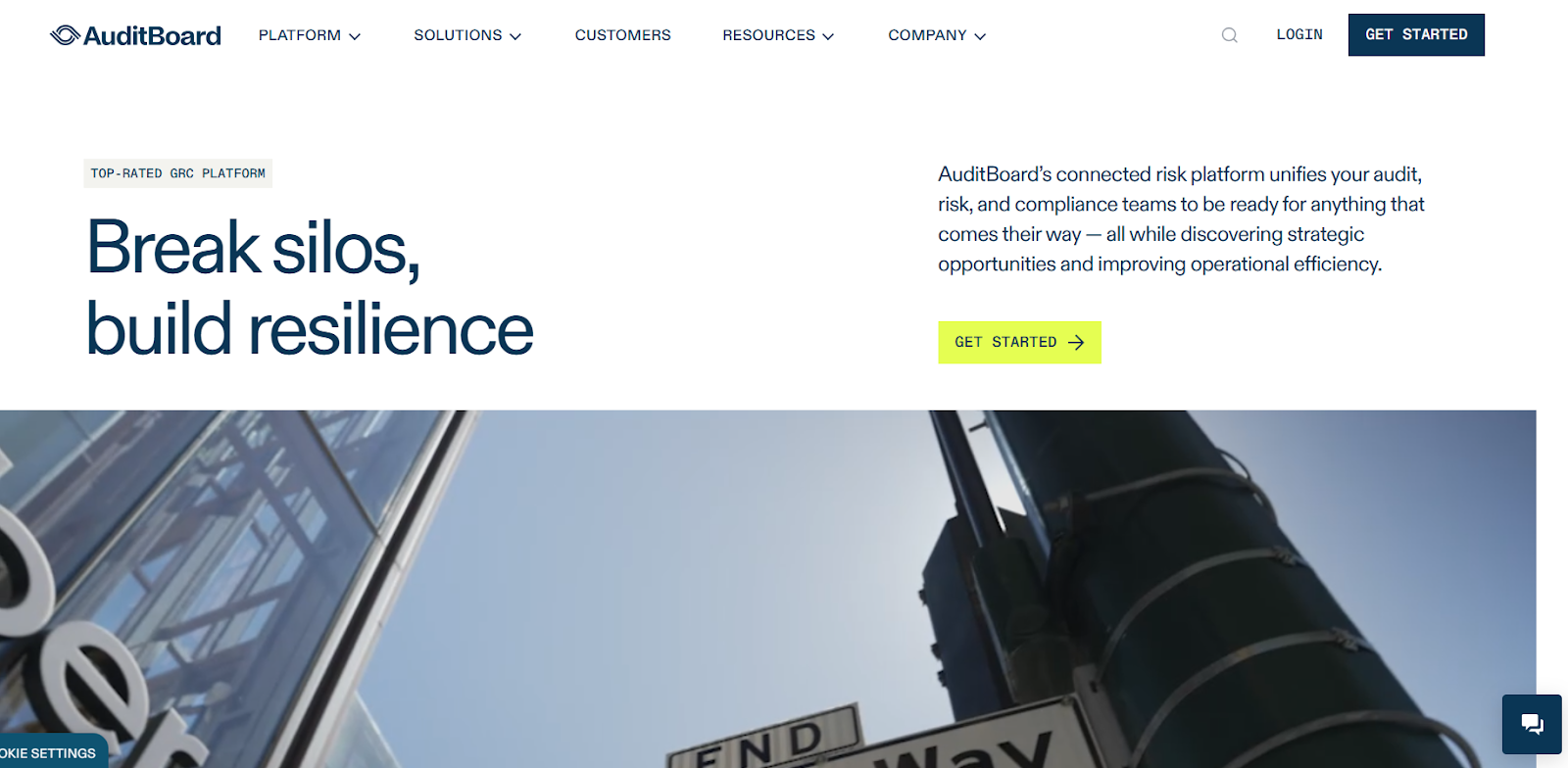
AuditBoard combines audit-first workflows and automation to help you streamline vendor assessments, questionnaires, and audit evidence.
The platform offers rapid deployment, collaborative remediation tracking, and metrics tailored for audit and control owners.
Features
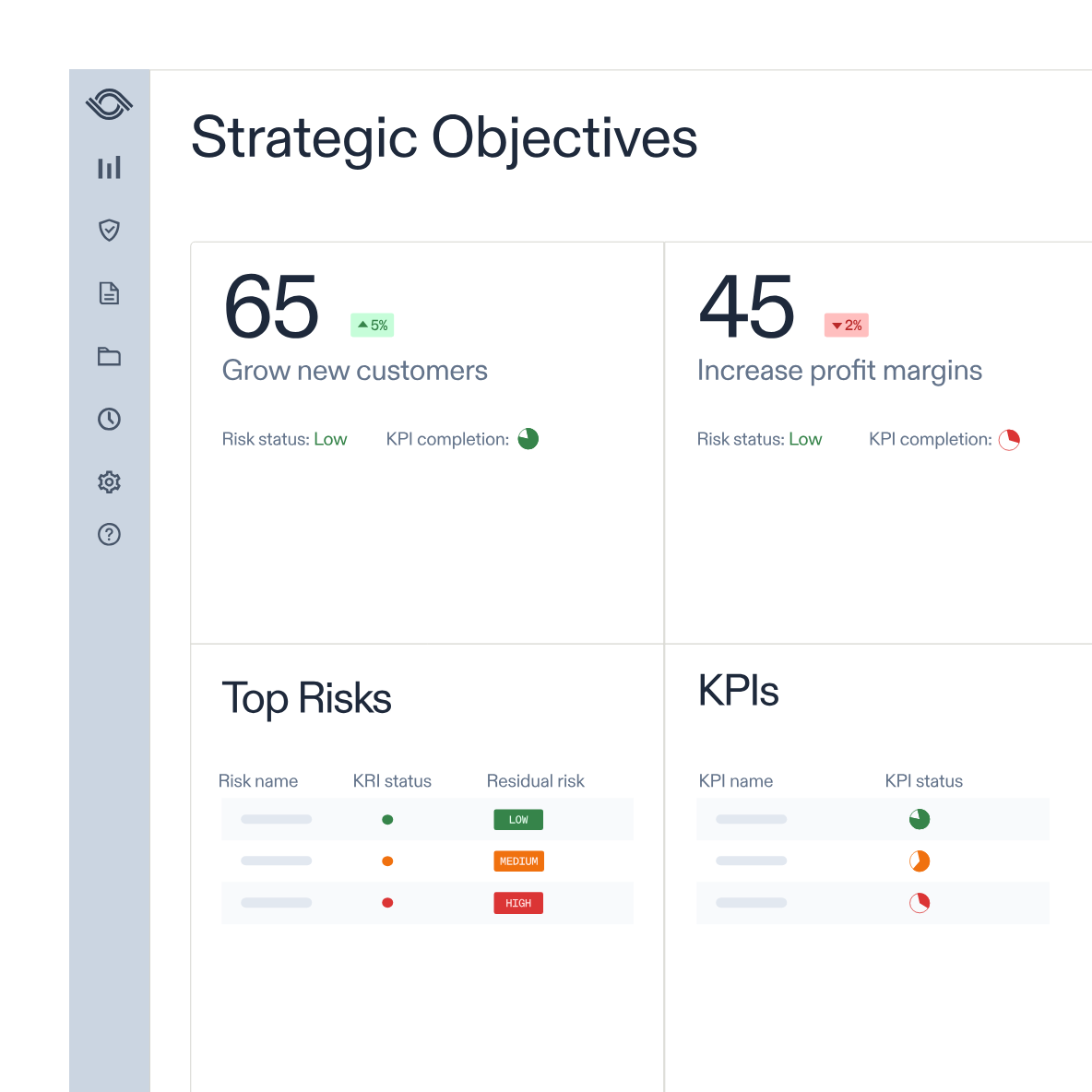
- Automated vendor questionnaires and evidence extraction that speed assessments and surface control gaps for auditors.
- Customizable reports and pre-built dashboards that can help your team uncover insights, track trends, and support data-driven decisions.
- Integrated workflows and APIs that let you streamline data collection and task management through integrations.
Standout Feature: Pre-Built 30+ Frameworks
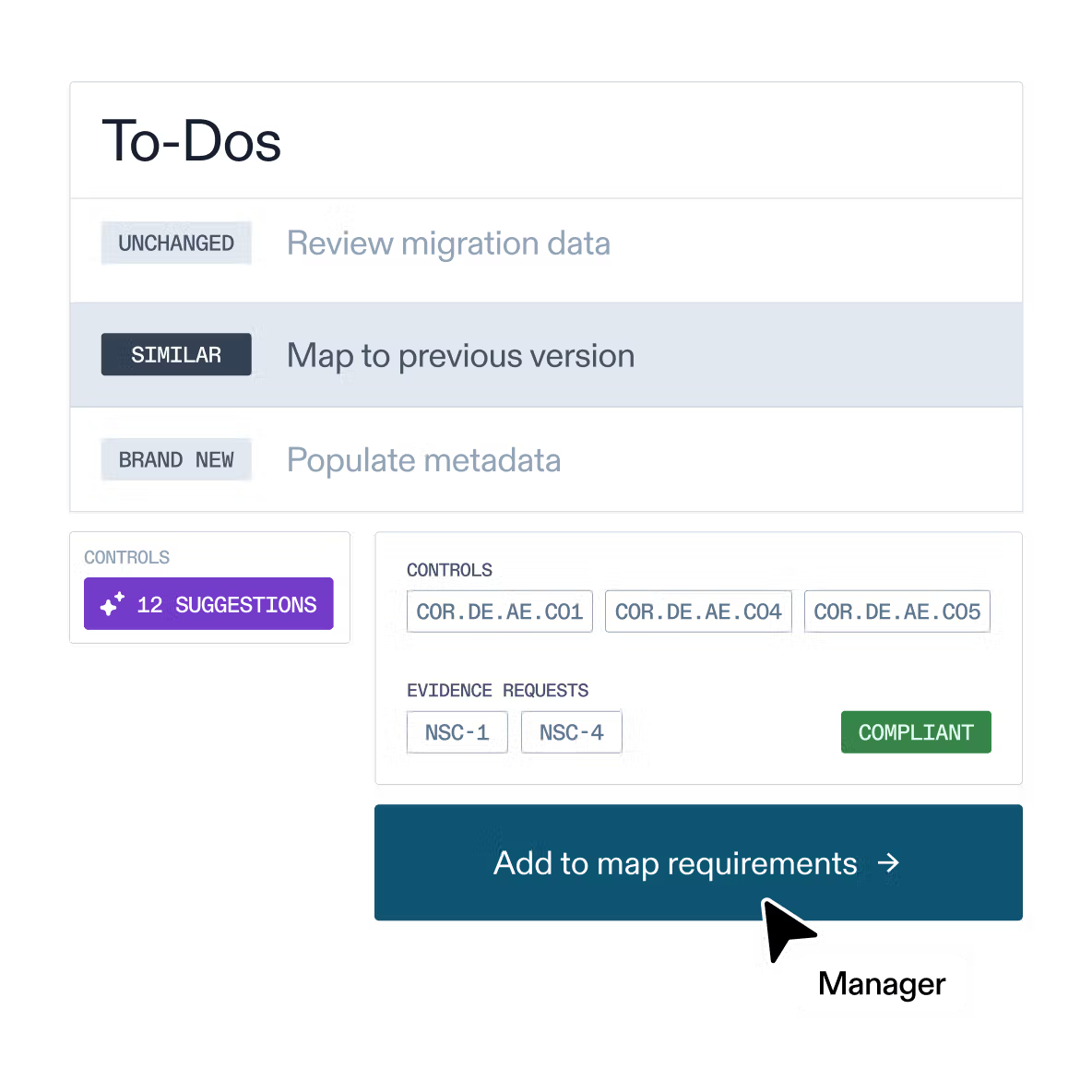
AuditBoard offers access to its preloaded library of 30+ frameworks (including SOC 2, ISO 27001, and GDPR) to help you stay audit-ready as your organization scales.
Pricing
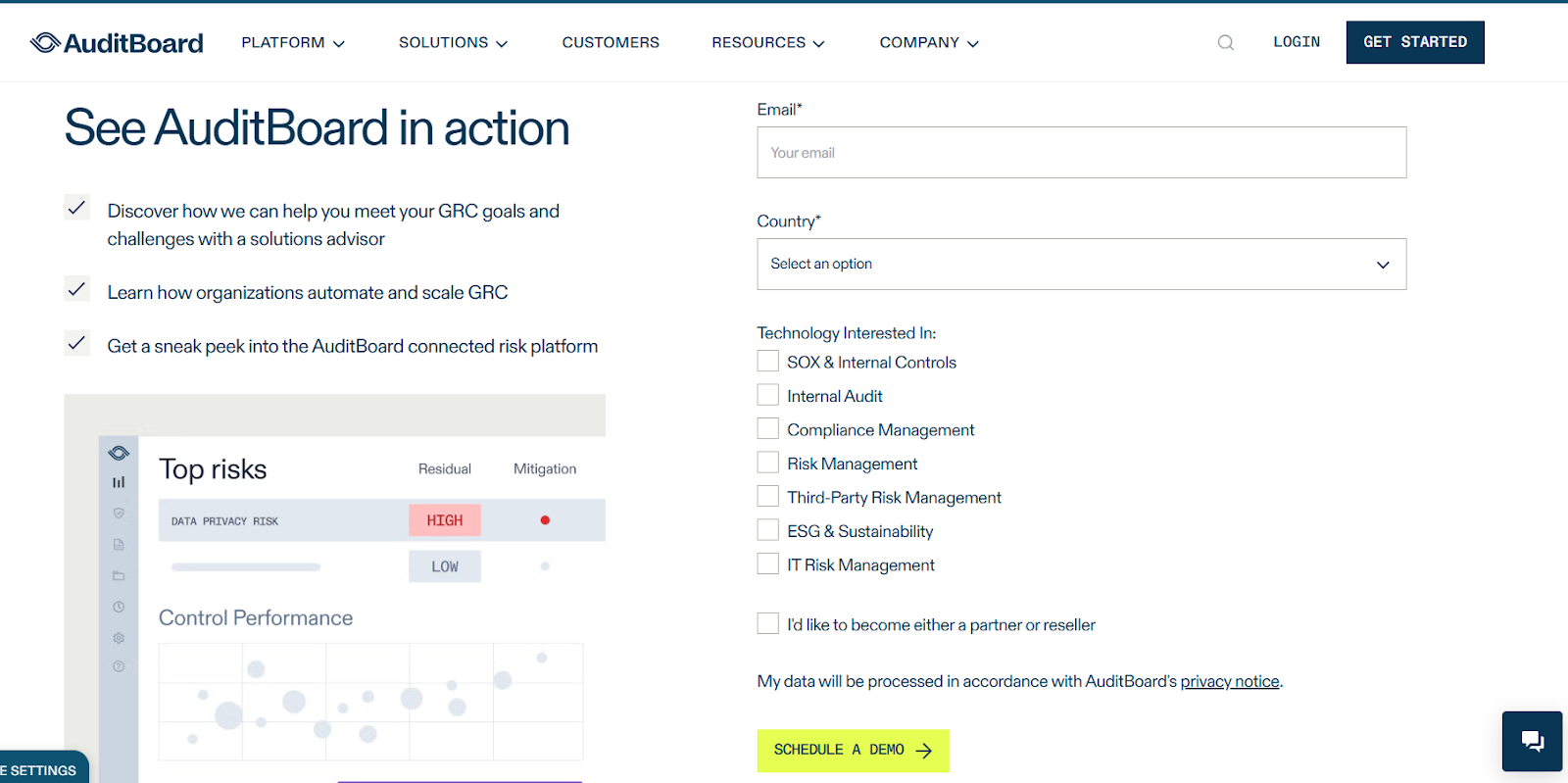
AuditBoard has not yet disclosed its pricing, so you’d have to contact them to book a demo and get a quote.
Pros & Cons
✅ Audit-centric UX and reporting that speed up evidence collection and auditor sign-off.
✅ Modern interface with good AI capabilities.
✅ Access to a preloaded library of 30+ frameworks to help you stay ready for audits.
❌ The average contract value of the tool is around $42,775/year, according to insiders, which is why some people have been looking for AuditBoard alternatives.
❌ The tool may be less feature-rich for operational vendor management tasks outside the audit lifecycle.
#8: ArcherIRM
Best for: Enterprises needing a mature, policy-driven IRM platform to govern complex vendor portfolios and regulatory obligations.
Similar to: AuditBoard.
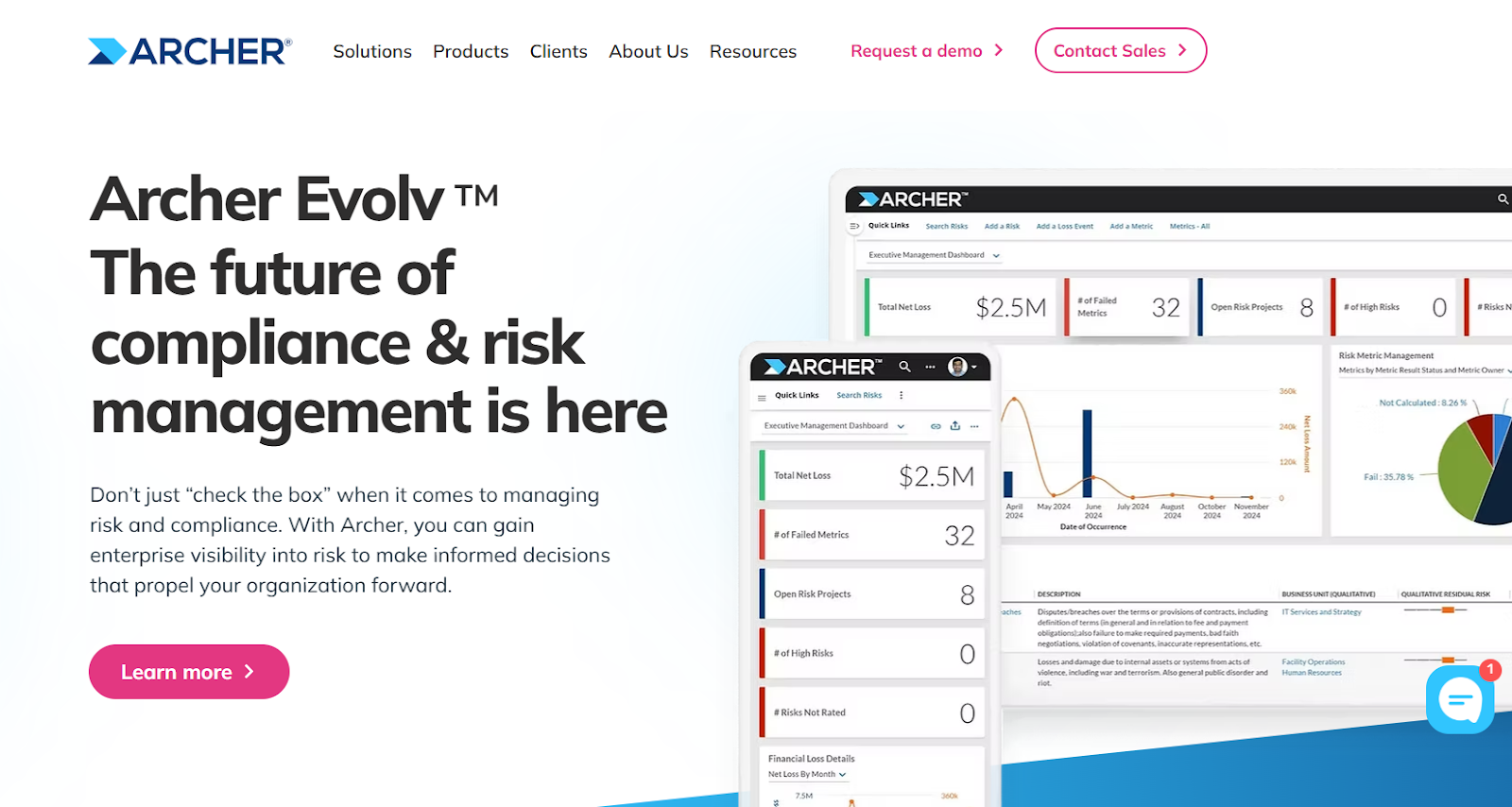
Archer provides a configurable enterprise GRC backbone with focused third-party governance capabilities to document engagements, measure residual risk, and monitor vendor performance.
The tool’s mature IRM approach is ideal for organizations needing structured, policy-driven vendor workflows and regulatory alignment.
Features
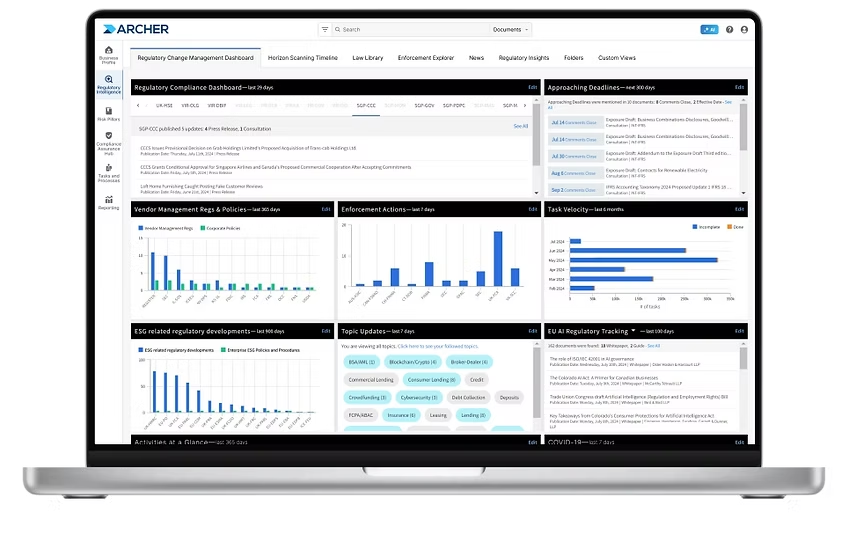
- Multi-dimensional risk scoring and engagement-level assessments with role-based approvals and continuous monitoring tied to enterprise risk registers.
- A customizable platform that adapts to your internal functions and extended third-party ecosystems.
- Consolidate standardized reports, audits, and assessments.
Standout Feature: Archer Evolv
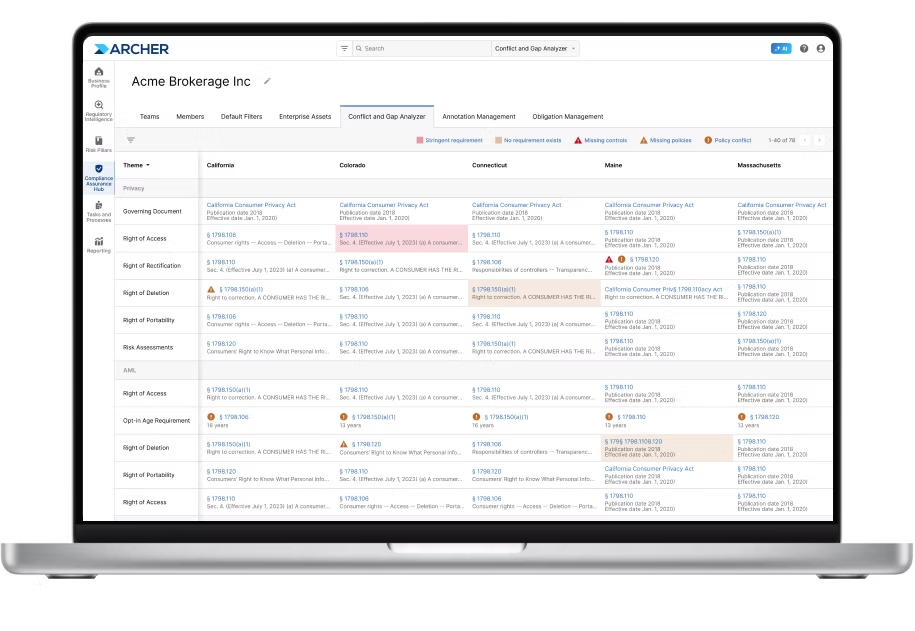
ArcherIRM’s Evolv capability stood out to me as it helps teams track regulatory developments from all over the world.
The tool aims to bring visibility to all requirements for better control over policies.
Pricing
ArcherIRM’s pricing structure is not publicly available, so you’d have to contact them to get a product demo and a quote.
Despite this, I was able to find some numbers in our ArcherIRM pricing guide.
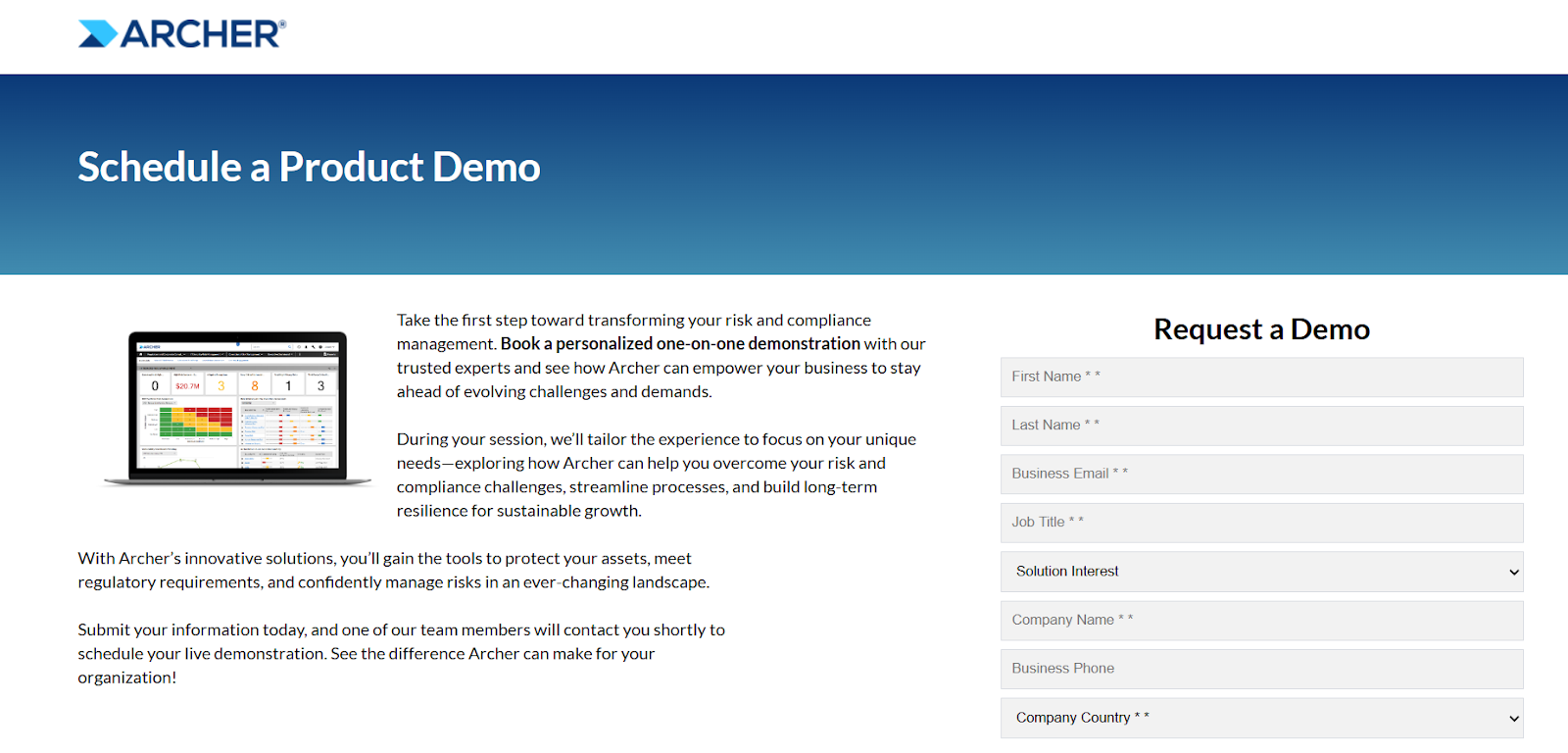
Pros & Cons
✅ Real-time cyber risk intelligence capabilities.
✅ Enterprise-grade analytics and real-time reporting.
✅ Strong policy and control framework support for regulated industries and complex risk models.
❌ An expensive price tag, which starts at approximately $55,000/year, which is why some SMEs have been looking for ArcherIRM alternatives.
❌ Customization and user onboarding can be time-consuming.
#9: LogicGate
Best for: Companies that want a highly configurable TPRM platform to adapt quickly to evolving processes and signals.
Similar to: ServiceNow GRC.
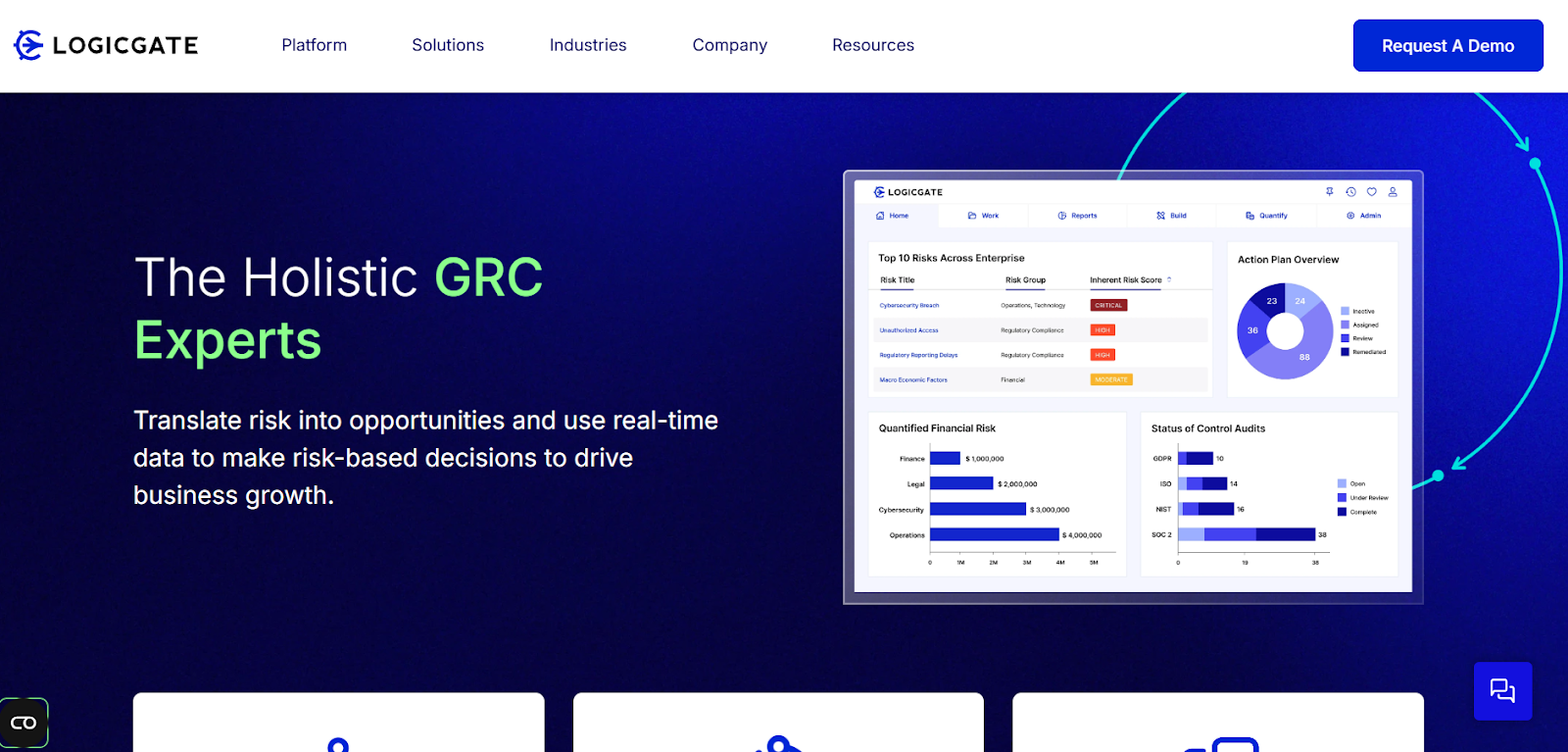
LogicGate Risk Cloud is a no-code GRC platform that centralizes vendor intake, automates conditional assessments, and aggregates third-party intelligence.
The tool’s adaptability lets you model unique vendor processes and integrate external risk signals without heavy development.
Features

- No-code conditional questionnaires linked to automated workflows and aggregated third-party intelligence for prioritized vendor risk actions.
- Centralized risk repository for visibility across governance, compliance, and third-party risks.
- Out-of-the-box GRC templates that your team can start with to automate compliance reporting, as well as audit trails.
Standout Feature: Spark AI
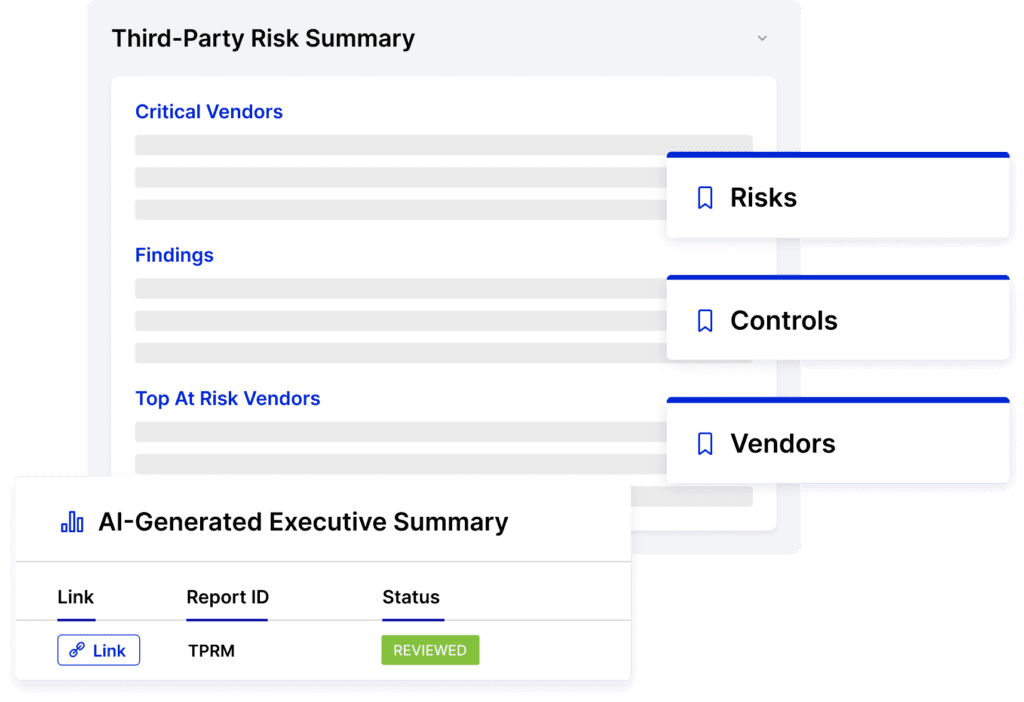
LogicGate offers AI-powered insights that help your team predict risk and support your decision-making.
➡️ Spark AI also lets you generate executive summaries, which are good for busy stakeholders looking for a quick update.
Pricing
LogicGate does not publicly disclose its pricing, so you’d have to book a personalized demo with its team to get a quote.
➡️ Take a look at our LogicGate pricing review, where our team found some reported numbers and also discusses whether it has good value for money.
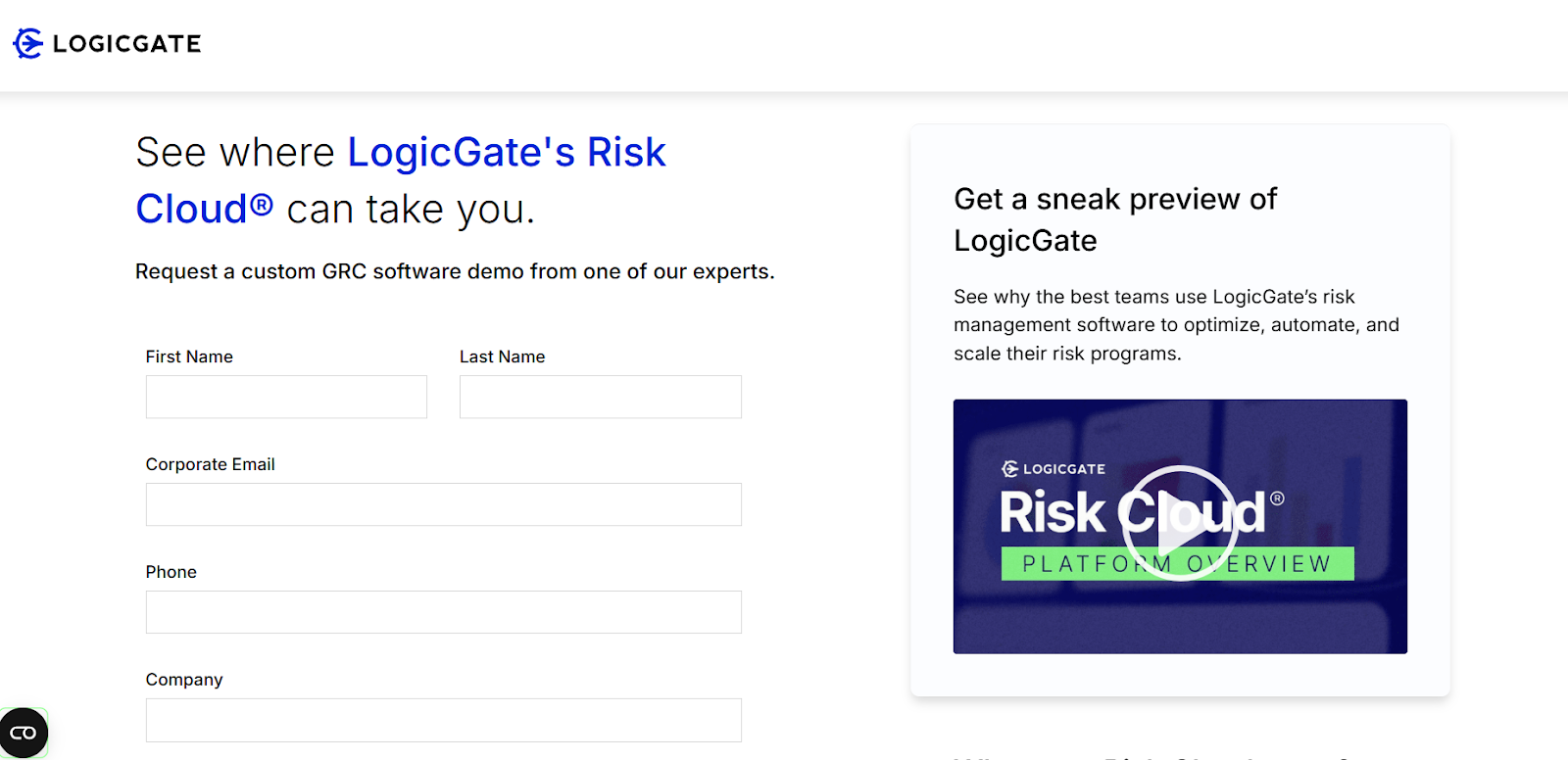
Pros & Cons
✅ AI-driven insights that help you predict risk and support your decision-making.
✅ LogicGate Risk Cloud automates control follow-up tasks.
✅ Very configurable with strong no-code capabilities.
❌ Depth of out-of-the-box integrations and advanced analytics can lag behind other tools on the market.
❌ The reporting features come with limitations, which is why some customers have been looking for LogicGate alternatives.
#10: SAI360
Best for: Organizations that want vendor management combined with compliance and analytics to manage vendor risk across global supply chains.
Similar to: MetricStream.
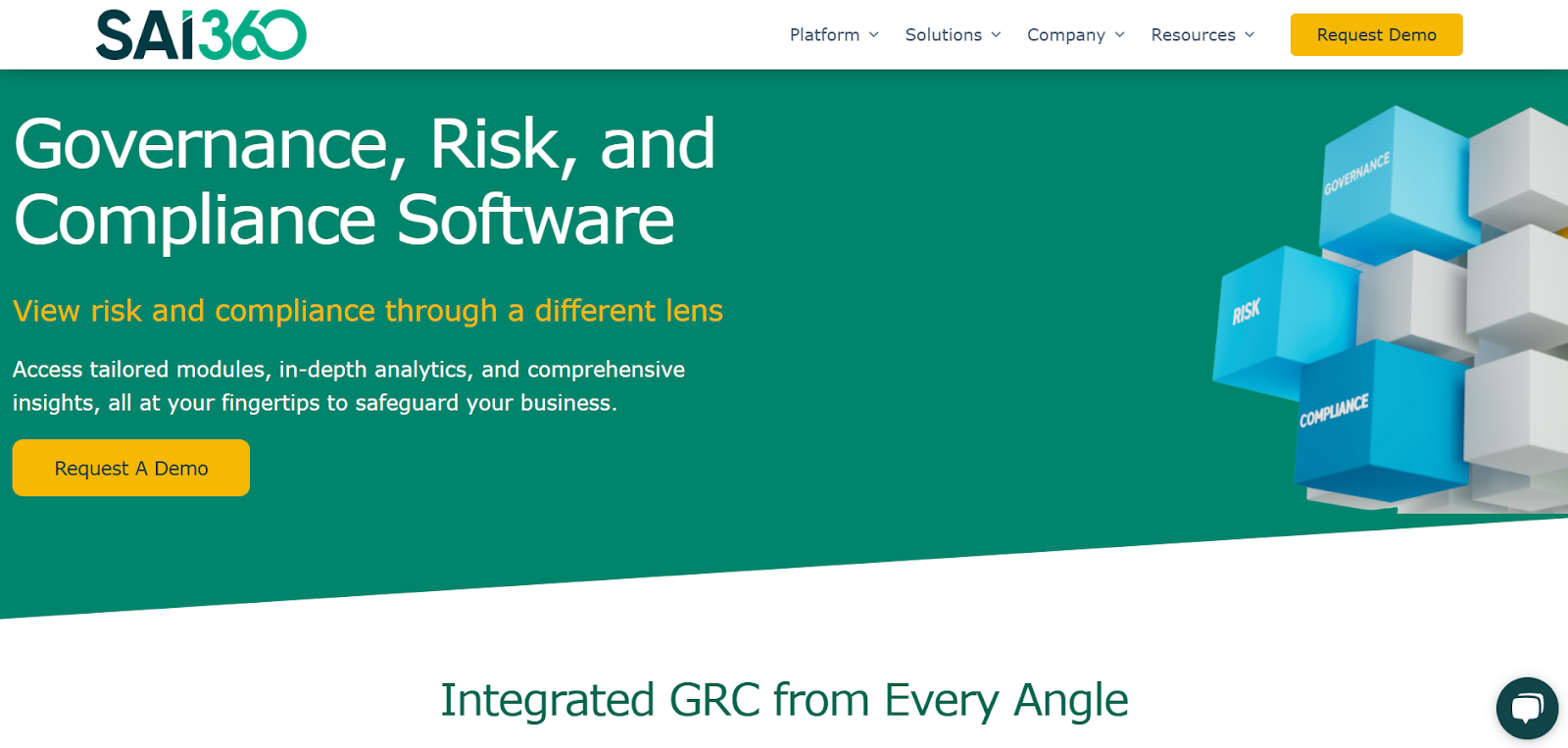
SAI360 provides a vendor management tool as part of a broader compliance and learning ecosystem, combining automated due diligence, continuous monitoring, and vendor-focused training to reduce third-party risk across supply chains.
The platform integrates risk analytics and automation to keep your vendor records up-to-date and trigger reassessments based on external data.
Features
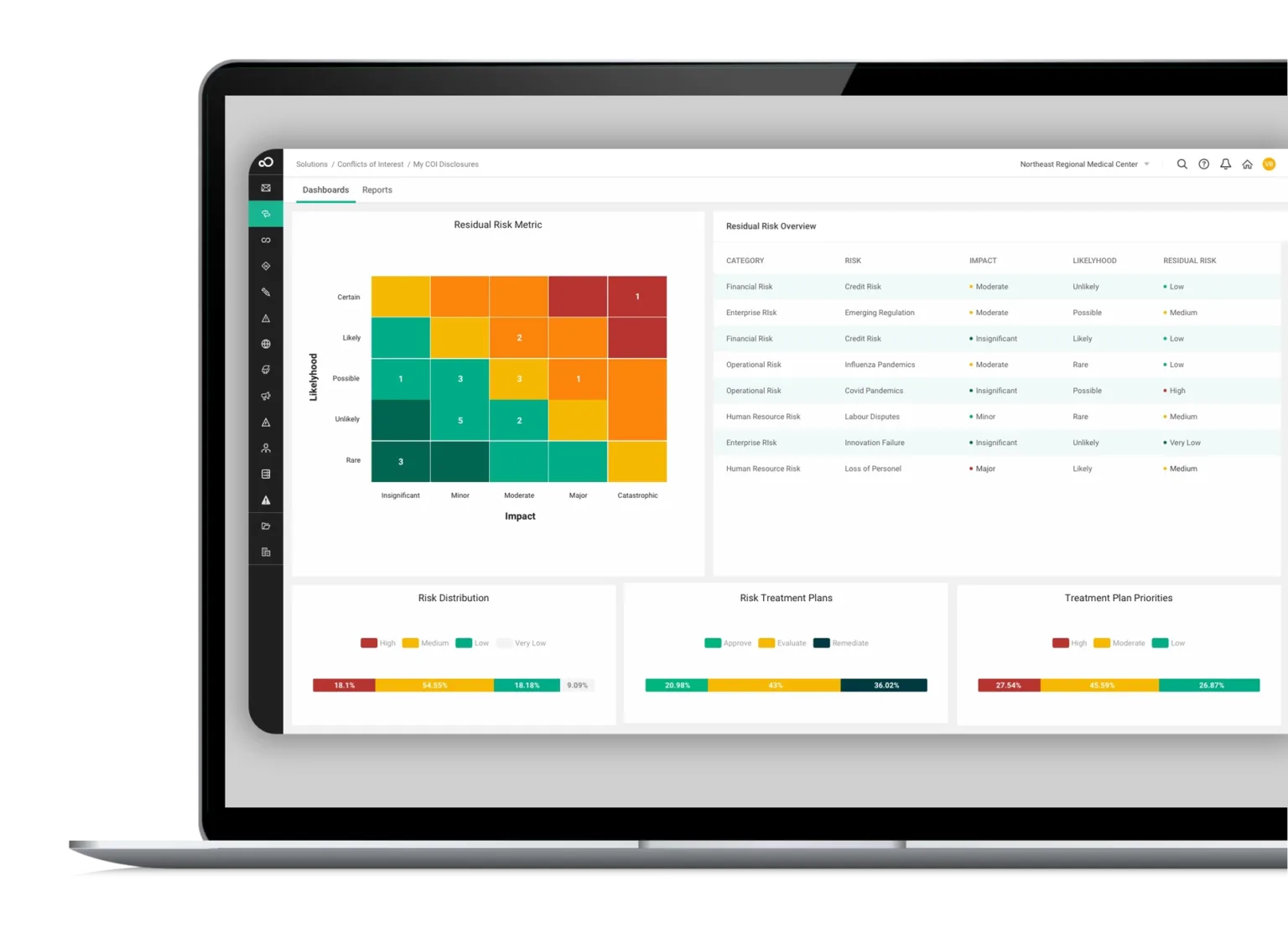
- Automated due diligence and continuous vendor monitoring with embedded third-party training and real-time alerts tied to risk score changes.
- Large compliance and supplier-risk content library coupled with automated assessments and remediation workflows.
- Pre-mapped frameworks and controls aligned with global regulations for faster deployment and easier compliance.
Standout Feature: Integrated GRC from Every Angle
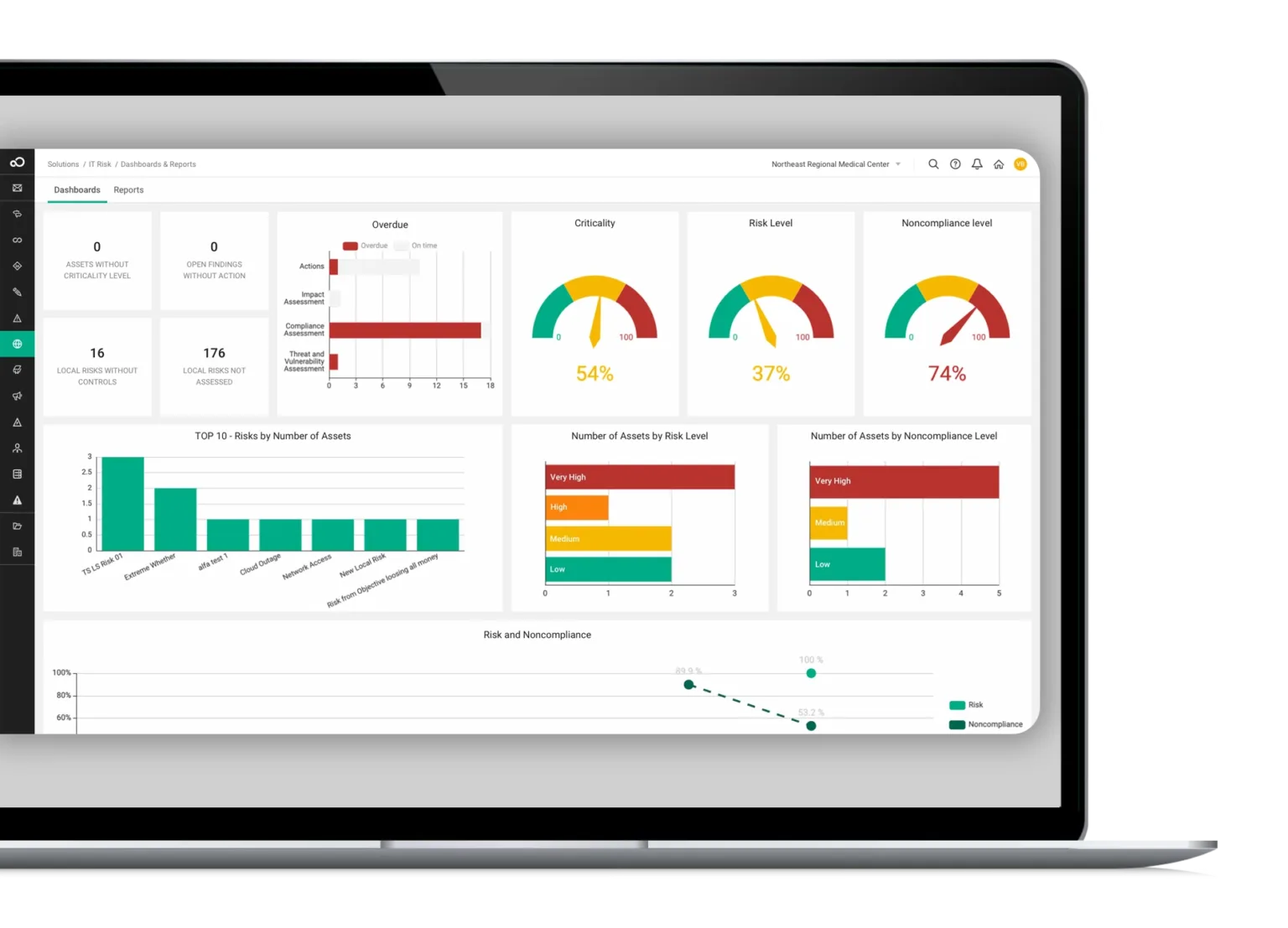
What stood out to me about SAI360 is that it offers a holistic, enterprise-wide approach that can help you unify risk, compliance, and ethics management into one customizable system.
Pricing
SAI360 does not currently disclose its pricing, so you’d have to contact them to get a product demo and a quote.
However, we researched SAI360’s pricing and found some reported numbers, so do check out our guide on it.
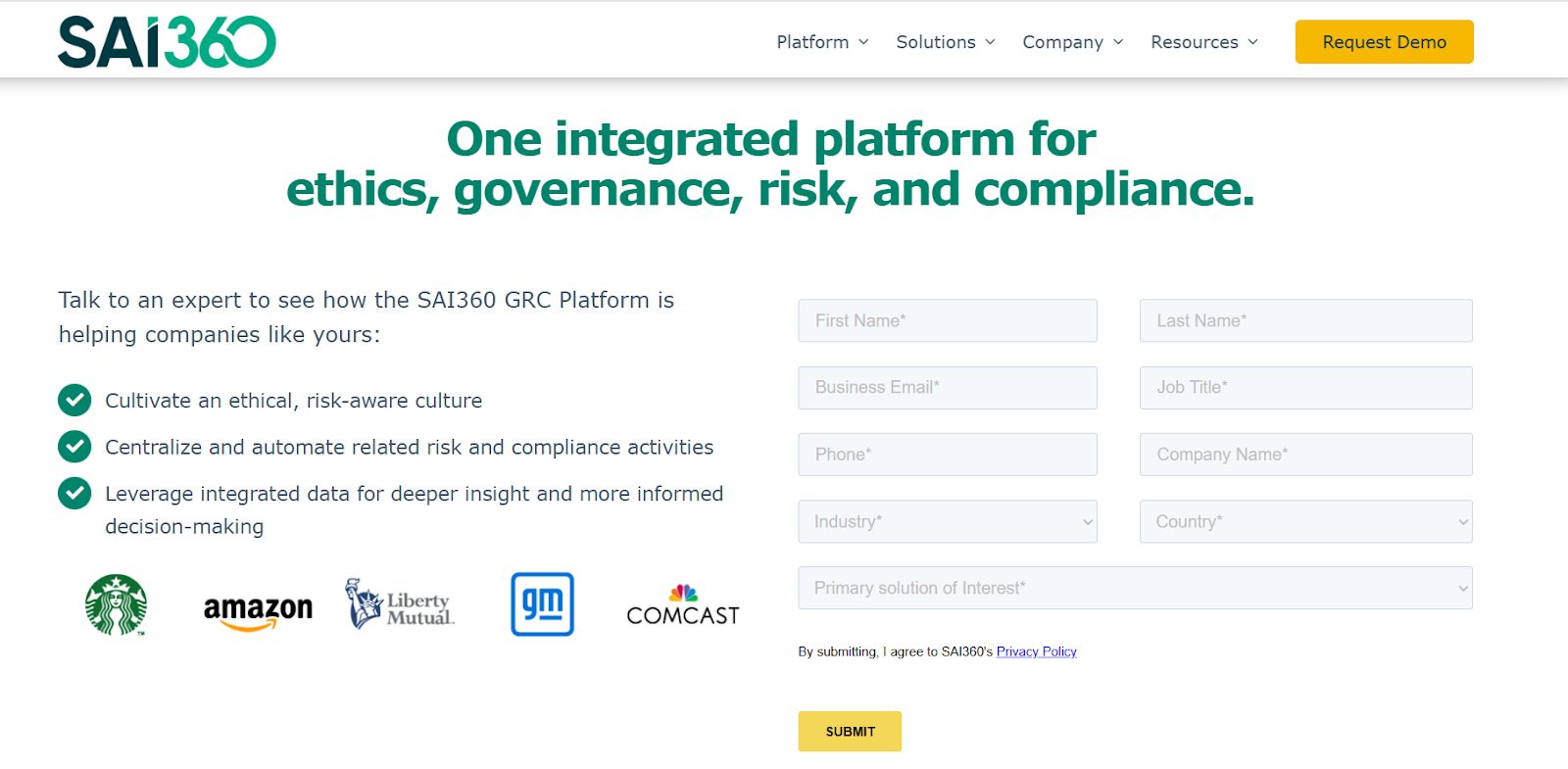
Pros & Cons
✅ Best-in-class reporting, risk assessment, and operational efficiency for enterprises.
✅ Useful integration of TPRM with compliance training and policy management for holistic vendor governance.
✅ 20+ ready-to-use GRC modules that you can get started with without having to set up the platform for months.
❌ The combined suite approach can feel heavy and more than some programs require, which is why some users have been looking for SAI360 alternatives.
❌ Admins cannot easily modify fields or workflows.
Turn vendor governance from a spreadsheet-driven headache into an auditable, automated practice
That was it from our list of the 10 best vendor management platforms on the market in 2025.
If your team needs to centralize vendor risk, shorten time-to-remediation, and keep stakeholders informed, try SmartSuite with its free plan and pre-built vendor-risk templates.
With SmartSuite, you can start with our pre-built vendor management template and scale into a full enterprise program.
Our platform will help you turn vendor governance from a spreadsheet-driven headache into an auditable, automated, cross-team practice.
Here’s what's in it for your team when you try SmartSuite:
- Access to a generous free plan with features including multi-board views (Kanban, Chart, Map, Timeline, Card, and Calendar), 100 automations/month, and 40+ field types, including formula and linked record fields.
- No-code automation builder to set up to 500,000 trigger/action workflows.
- Built-in productivity tools, including time tracking, status tracking, and checklists.
- Team collaboration and planning tools such as whiteboards and SmartSuite docs.
- Resource management across projects and teams.
- 40+ field types, including the option to add your custom fields.
Sign up for a free plan to test the water or get a 14-day free trial to explore all its amazing features.
Or, if you’d like to talk to our team of experts, schedule a demo.
Read More
- 10 Best Riskonnect Alternatives For GRC In 2025
- Riskonnect Pricing: Is It Worth It In 2025?
- Atera Pricing: Is It Worth It in 2025?
- BMC Helix Pricing: Is It Worth It In 2025? [Reviewed]

Run your entire business on a single platform and stop paying for dozens of apps
- Manage Your Workflows on a Single Platform
- Empower Team Collaboration
- Trusted by 5,000+ Businesses Worldwide






